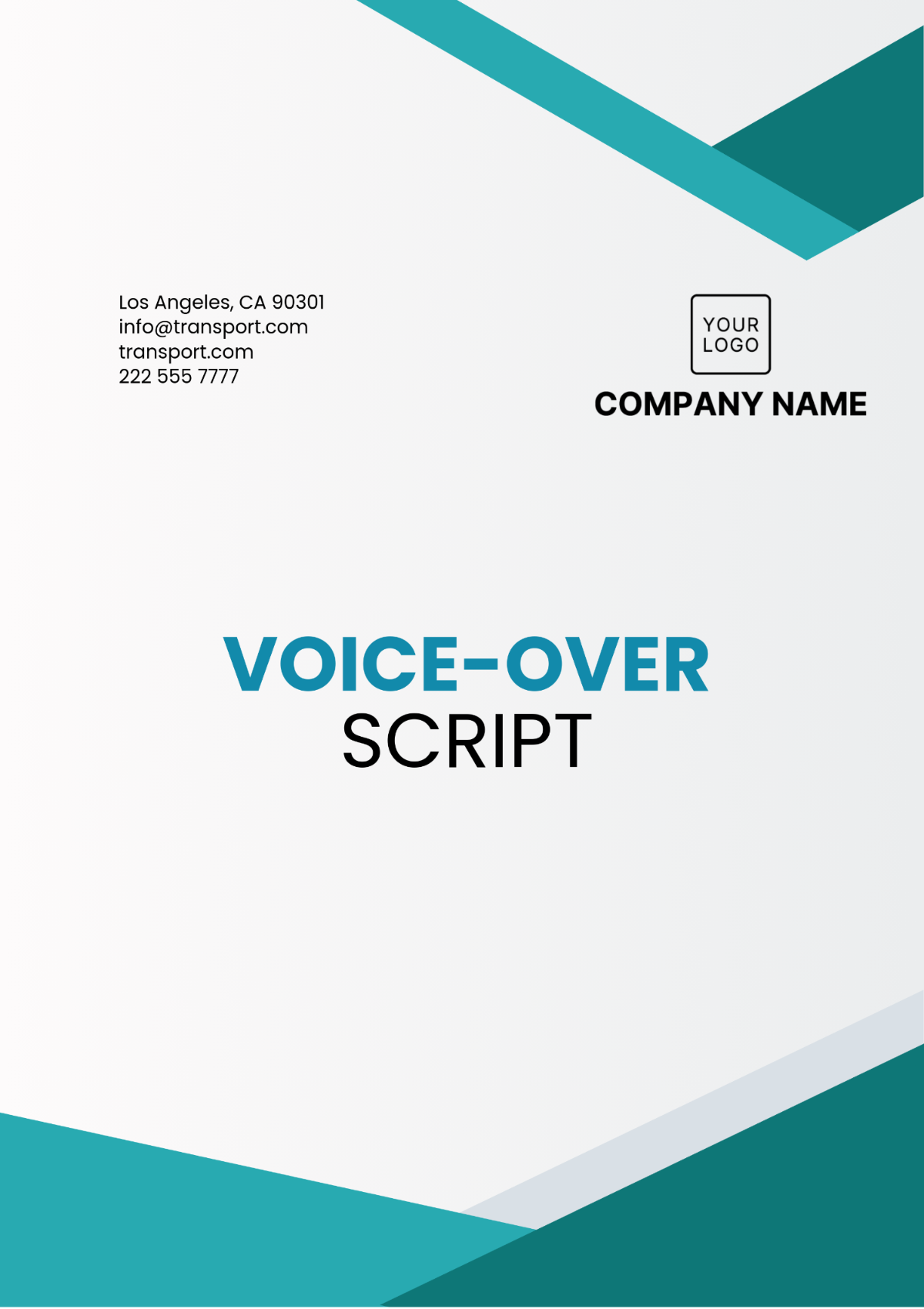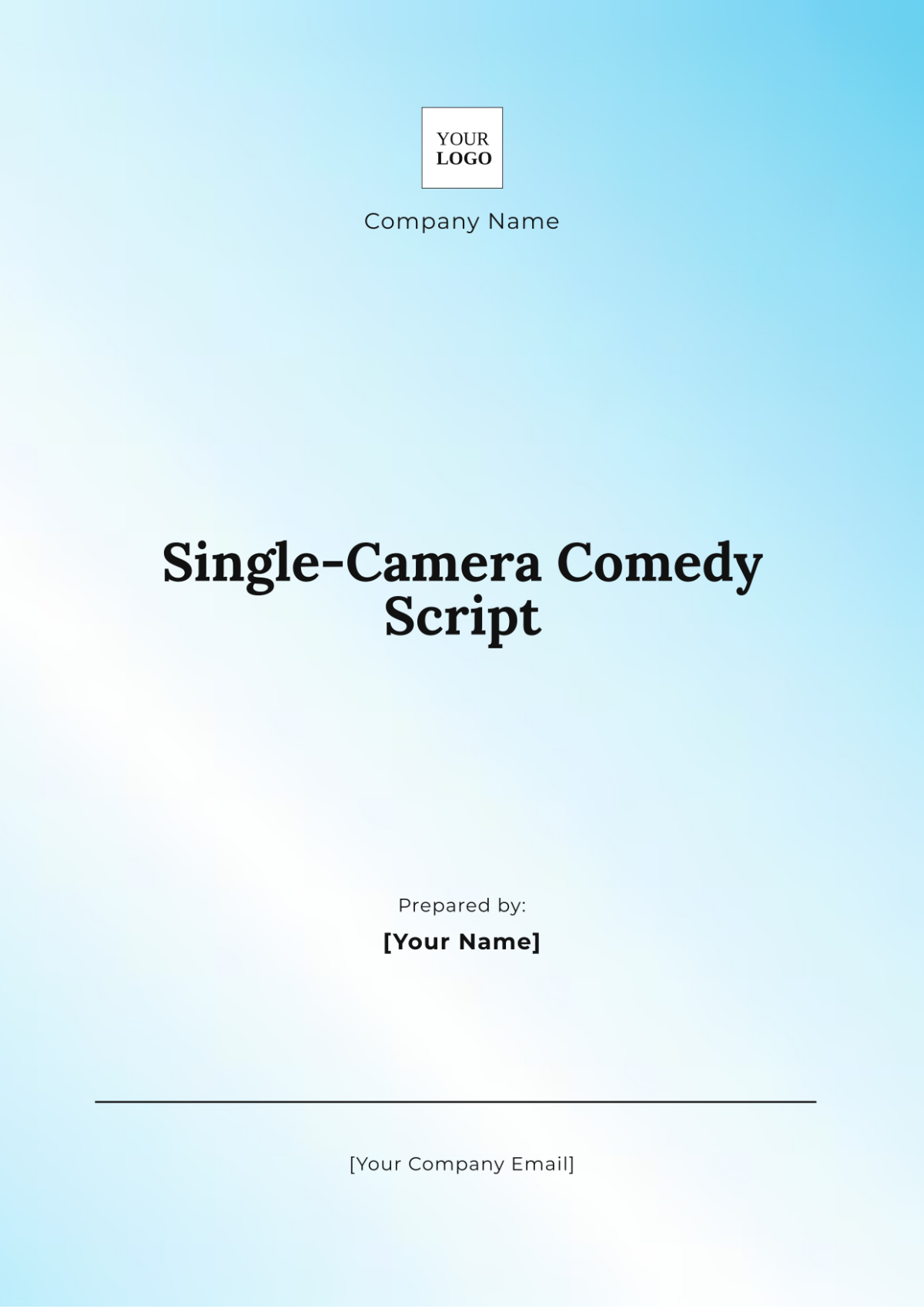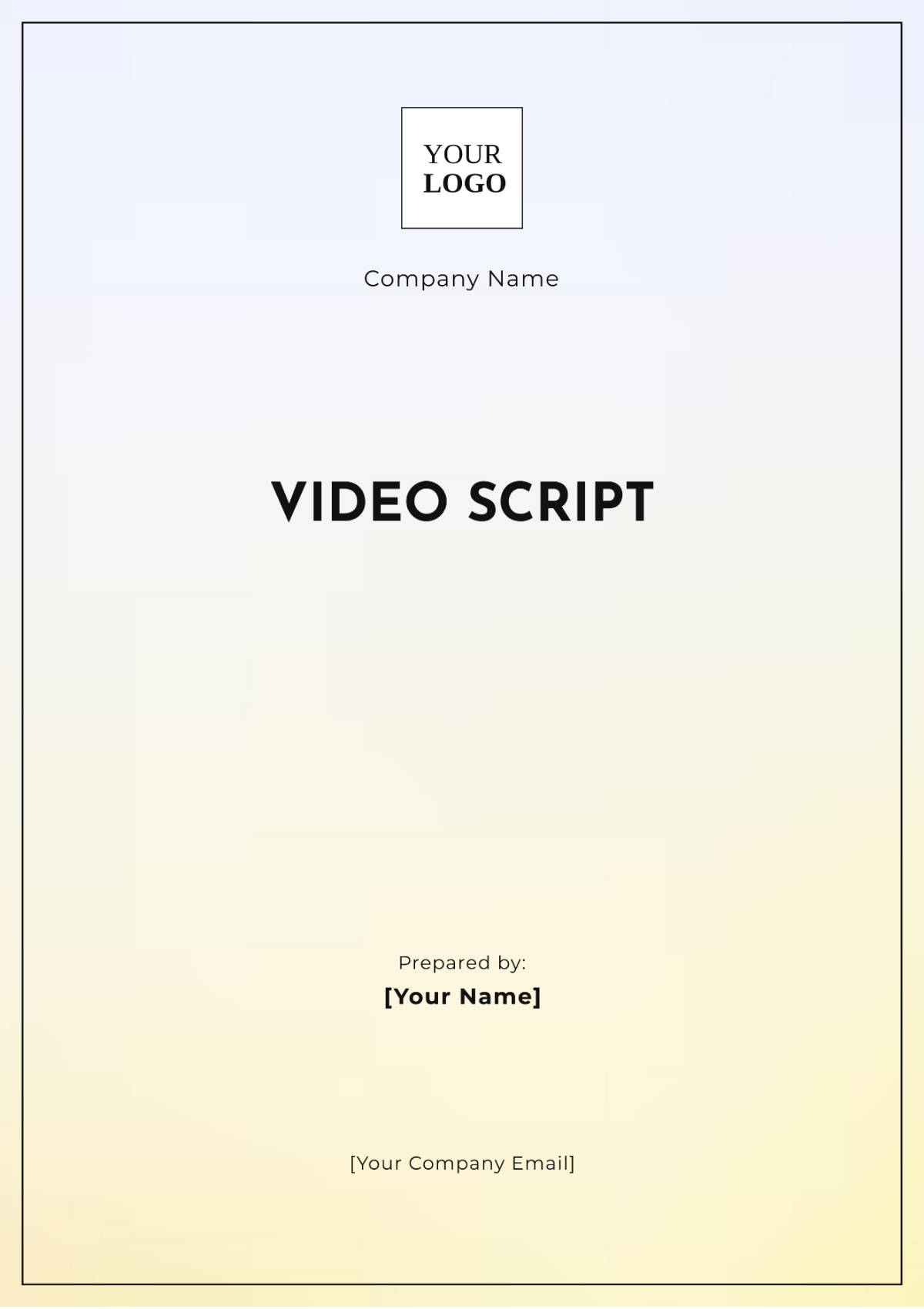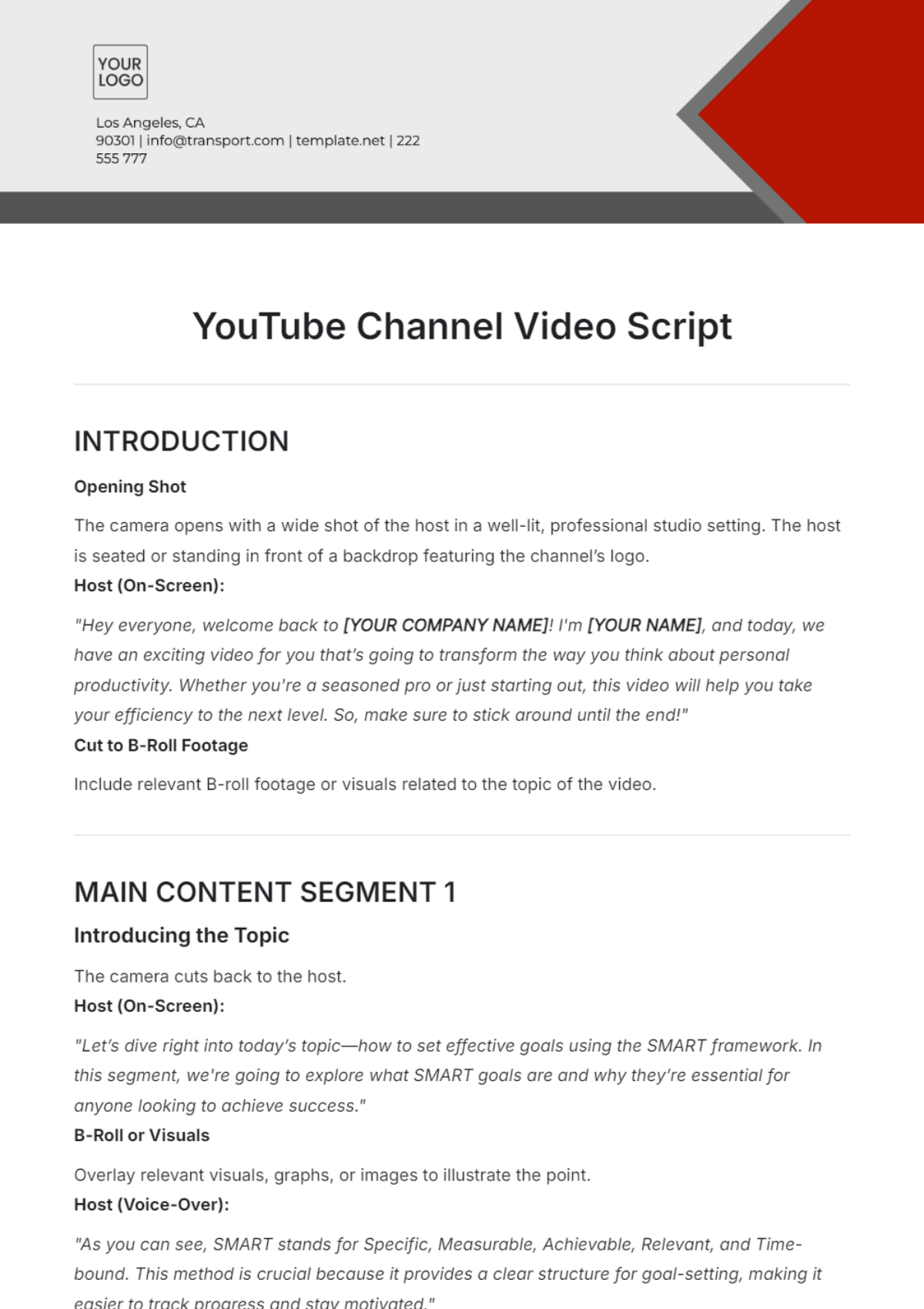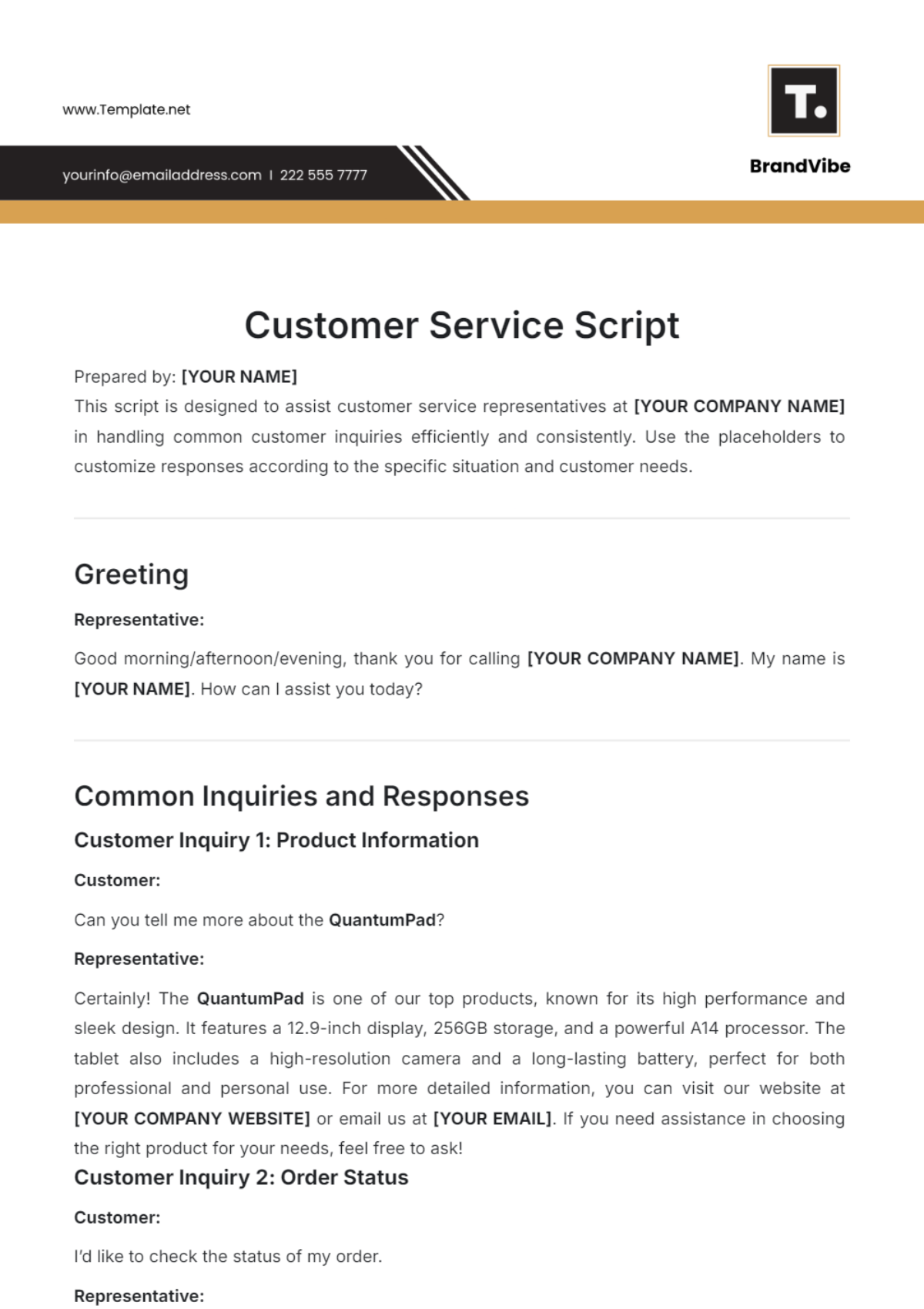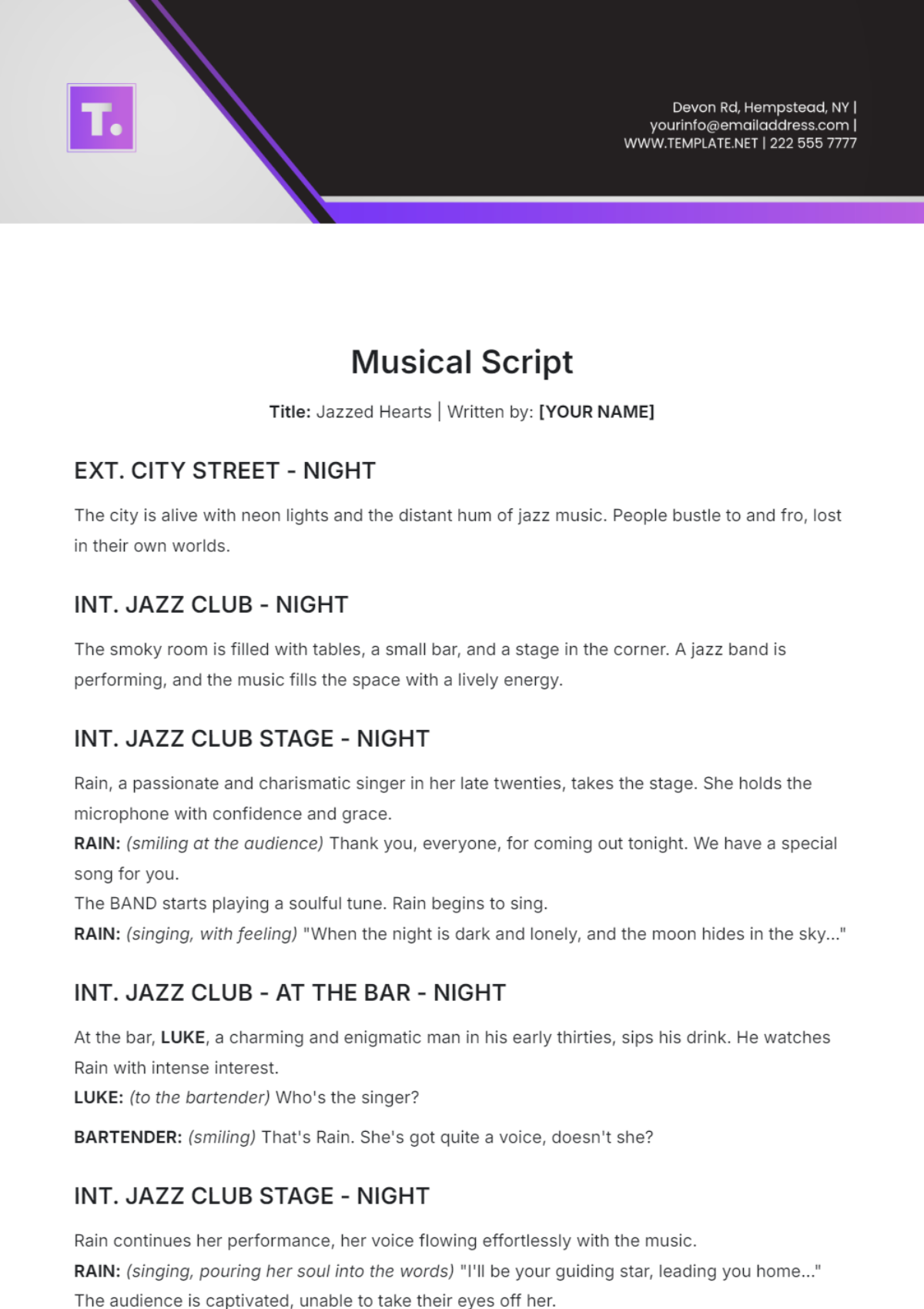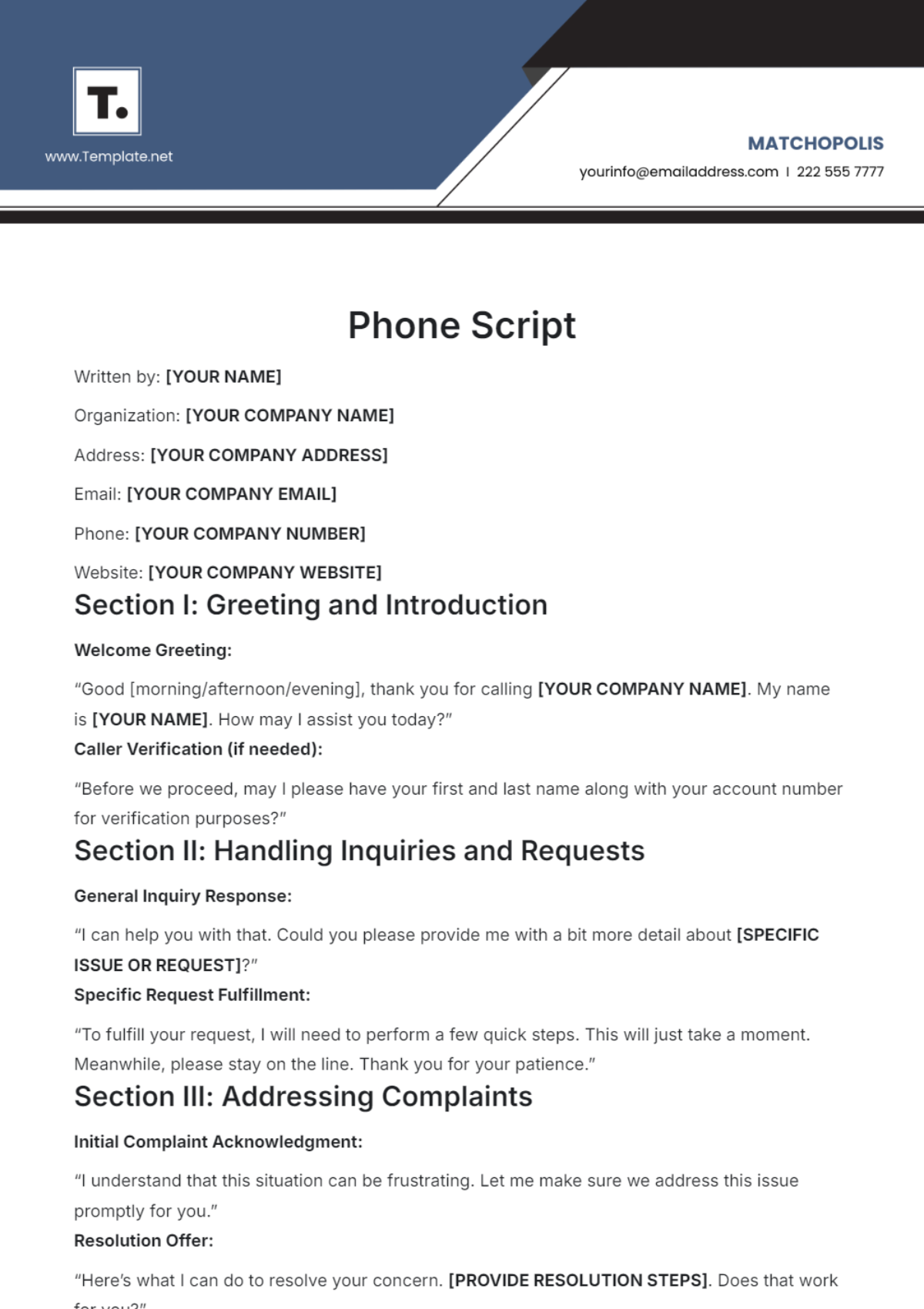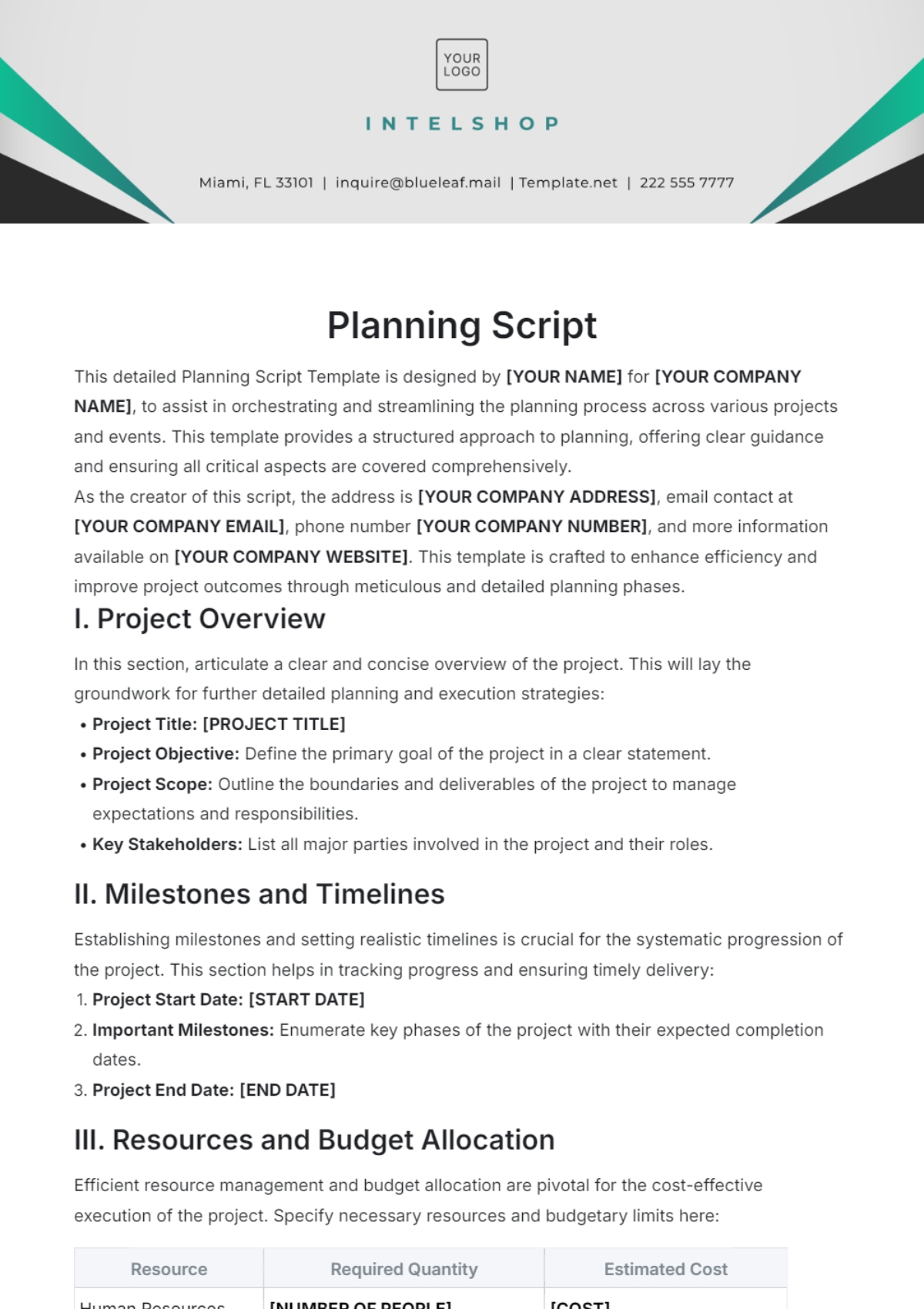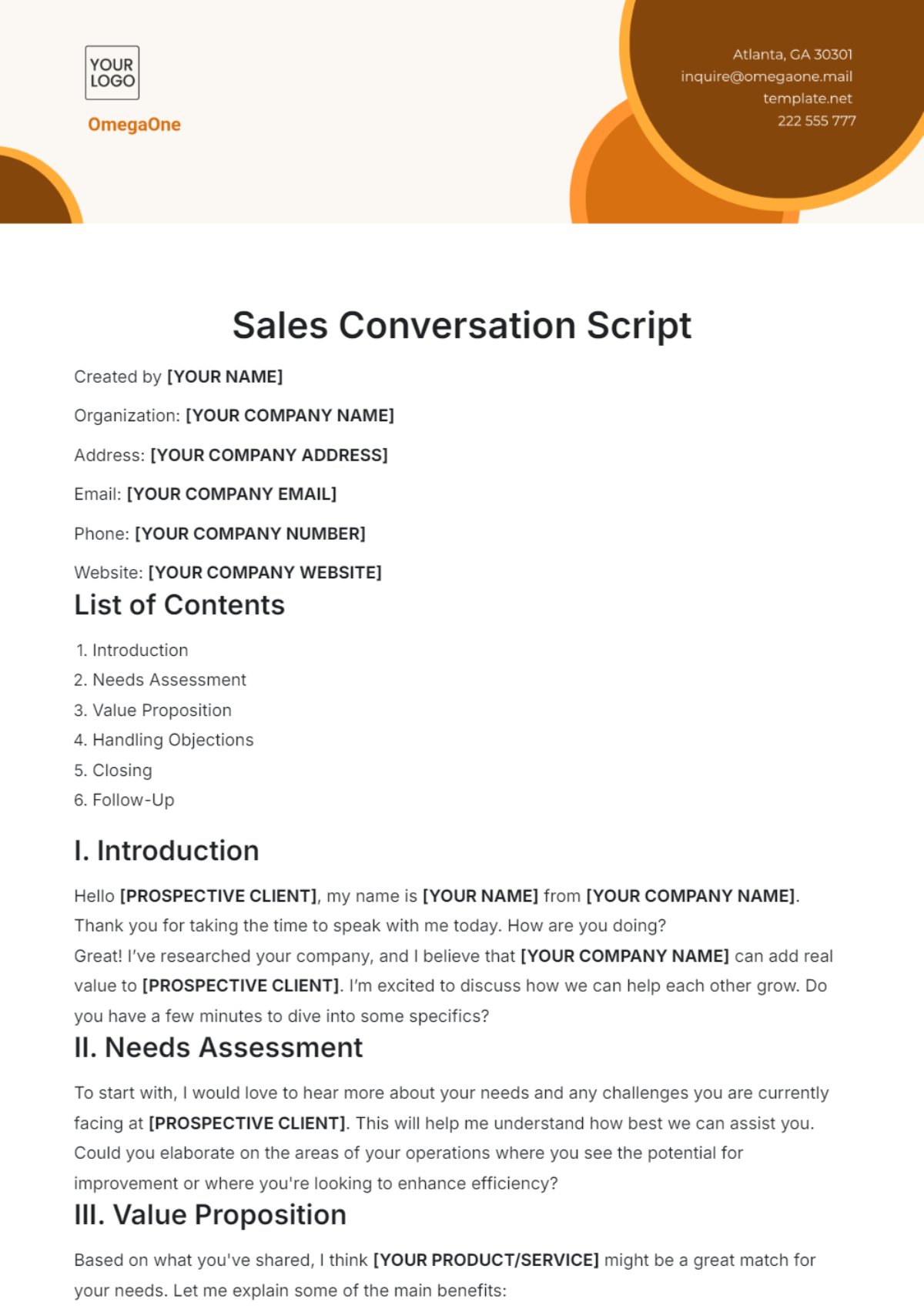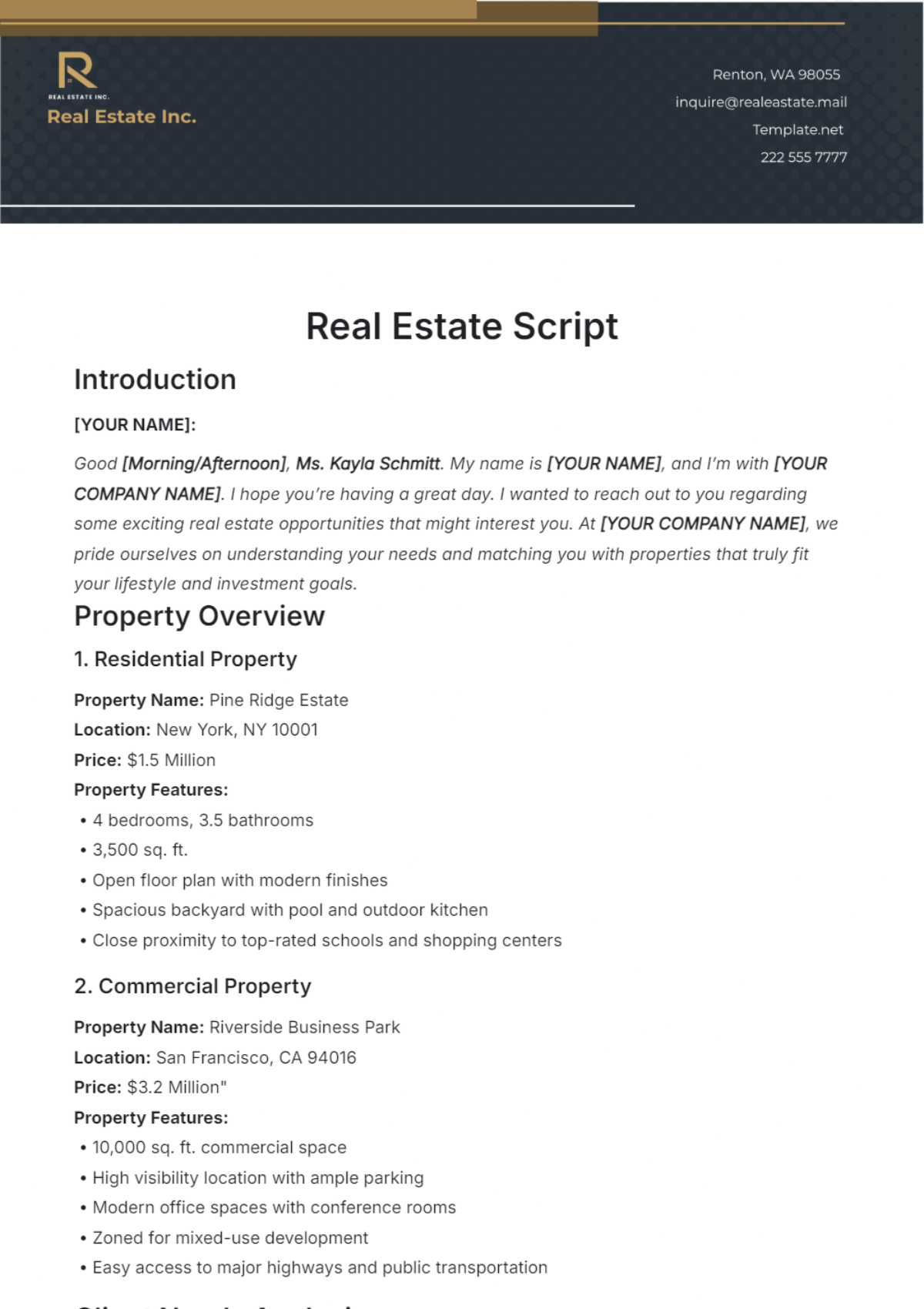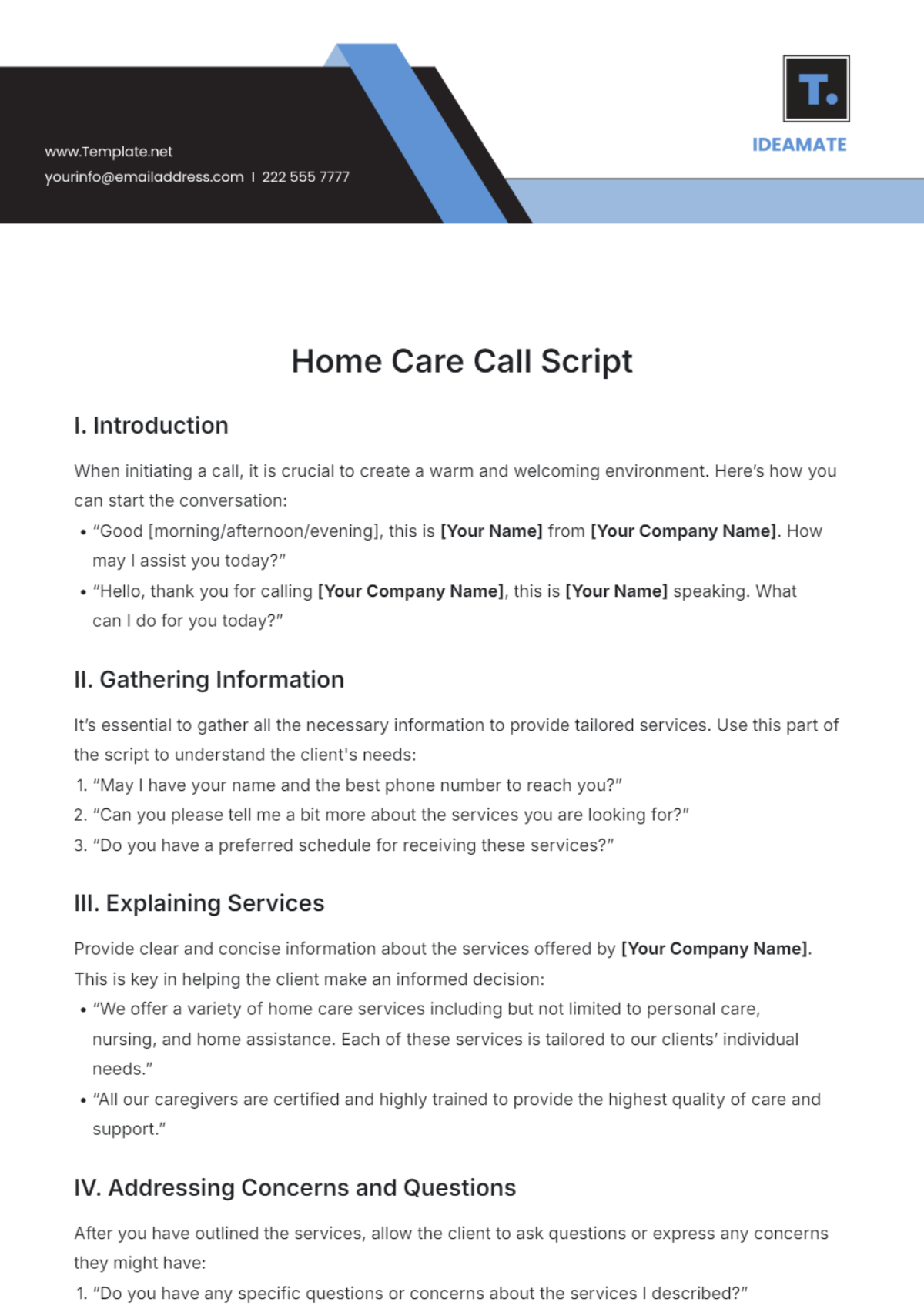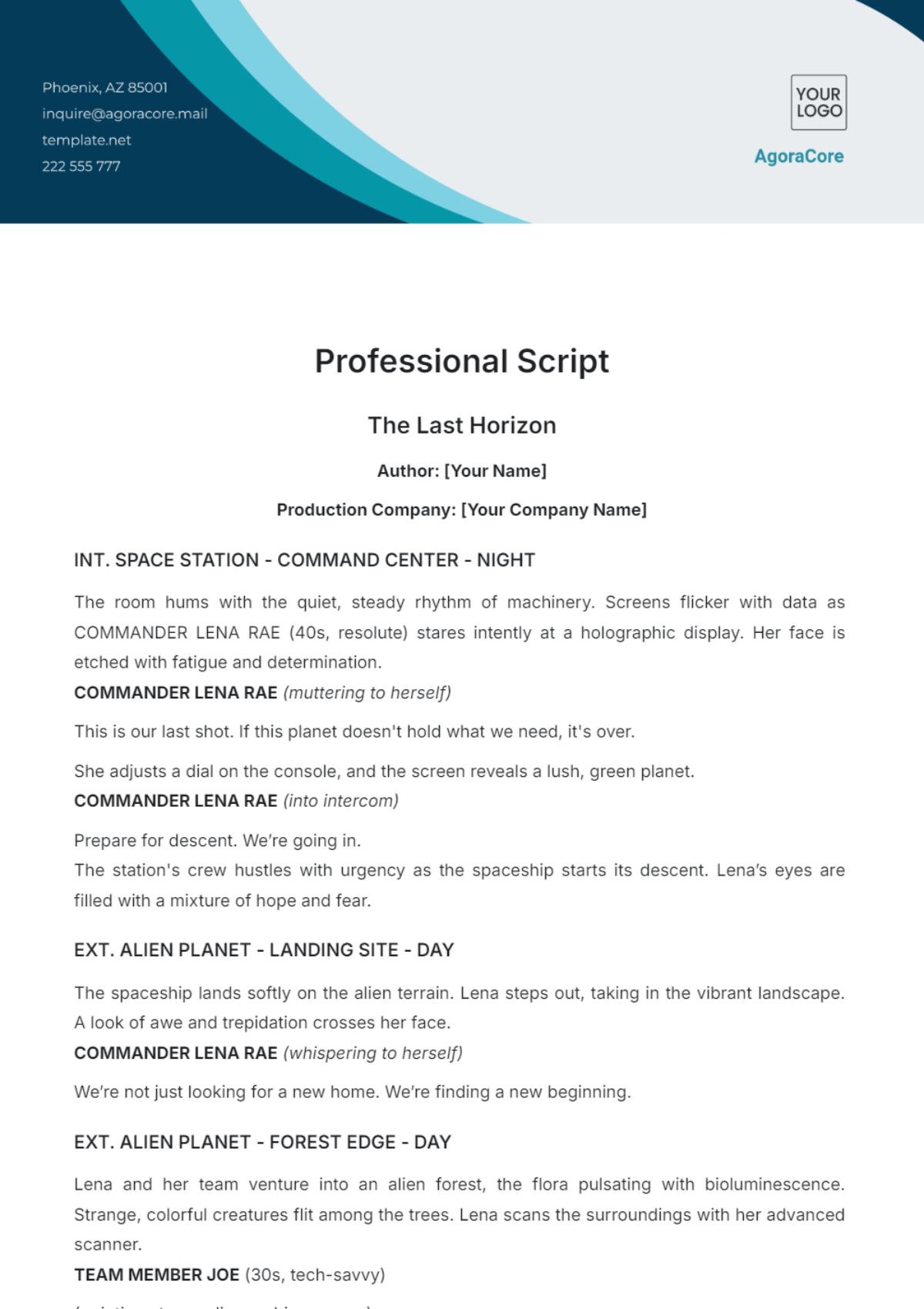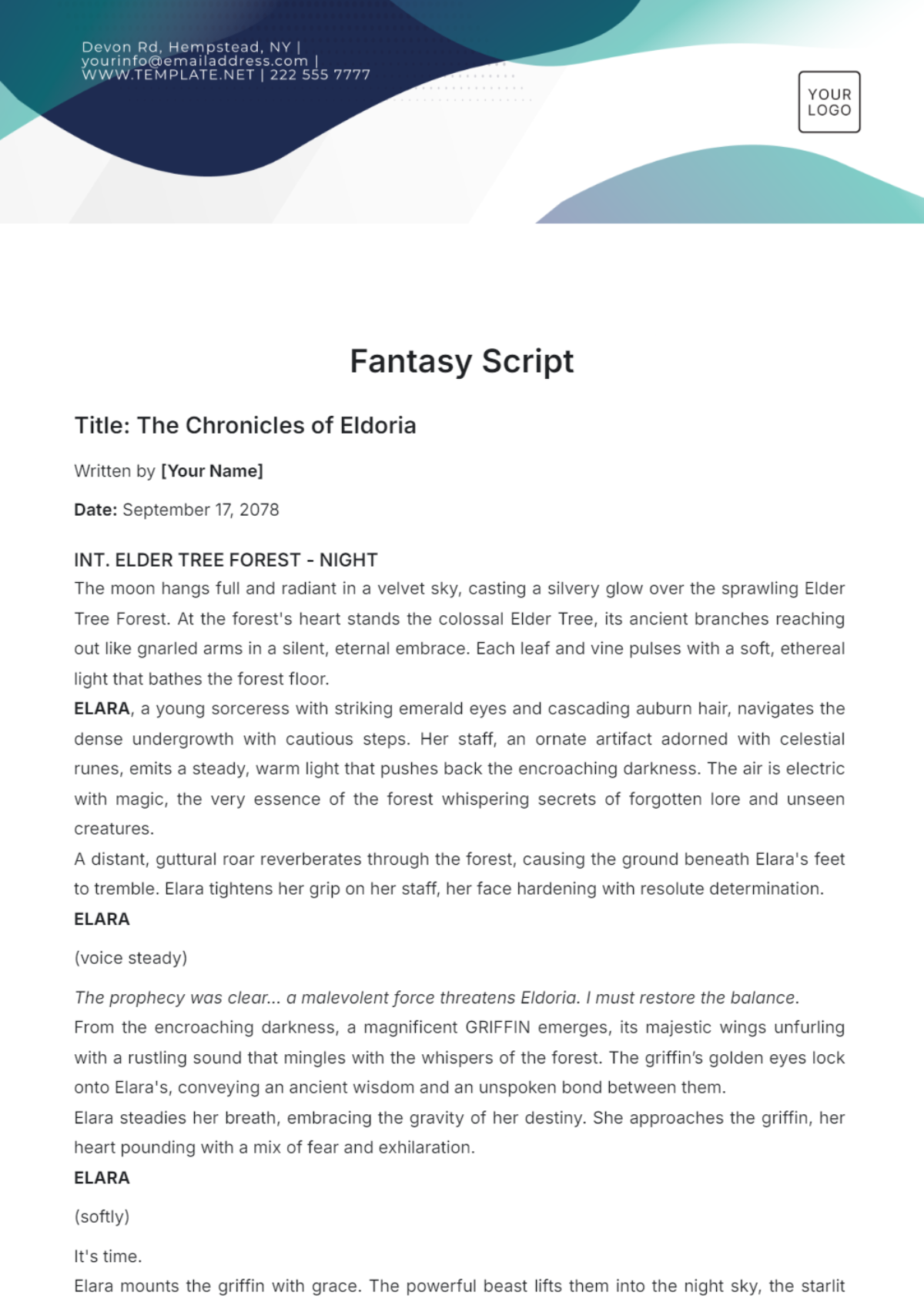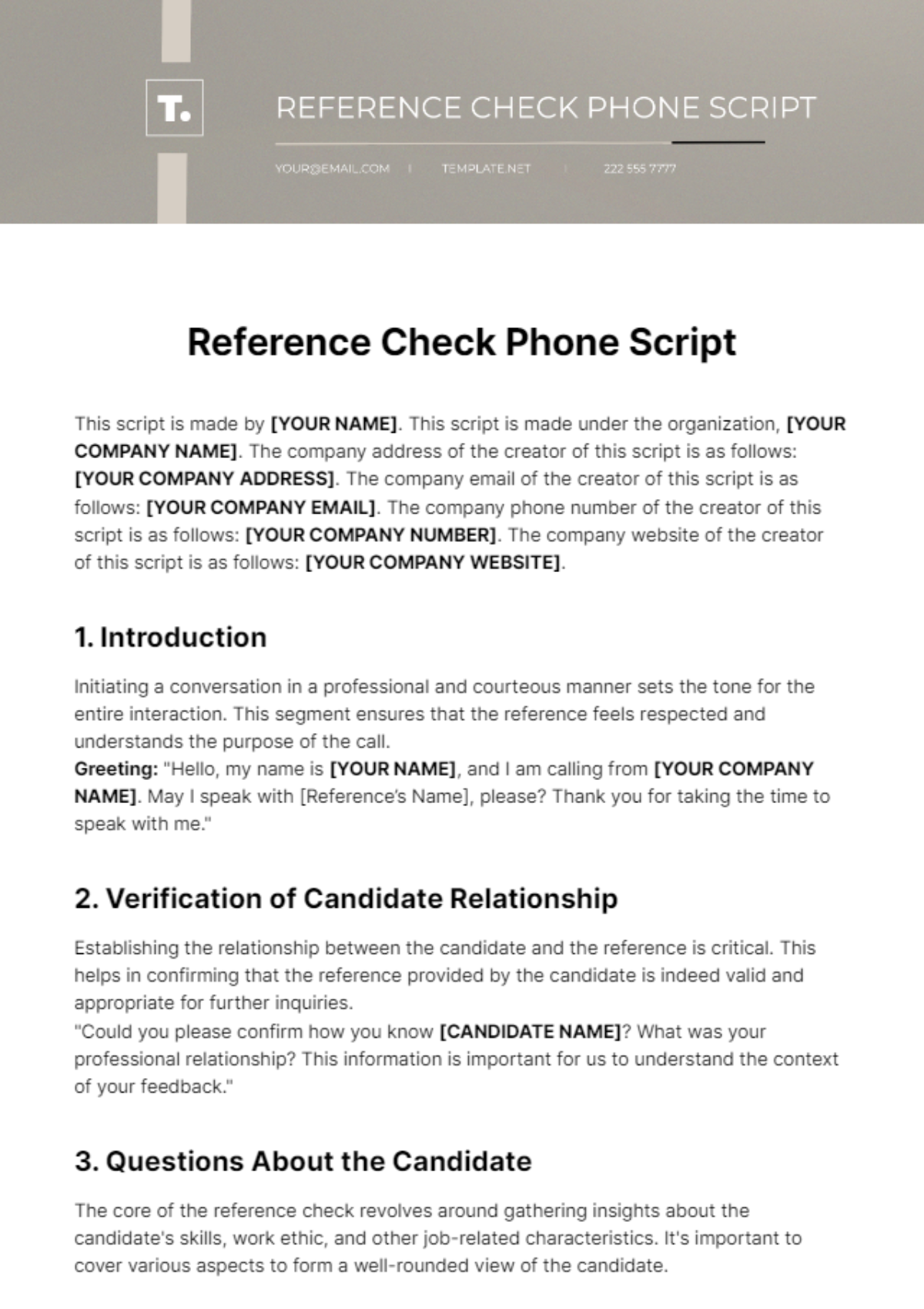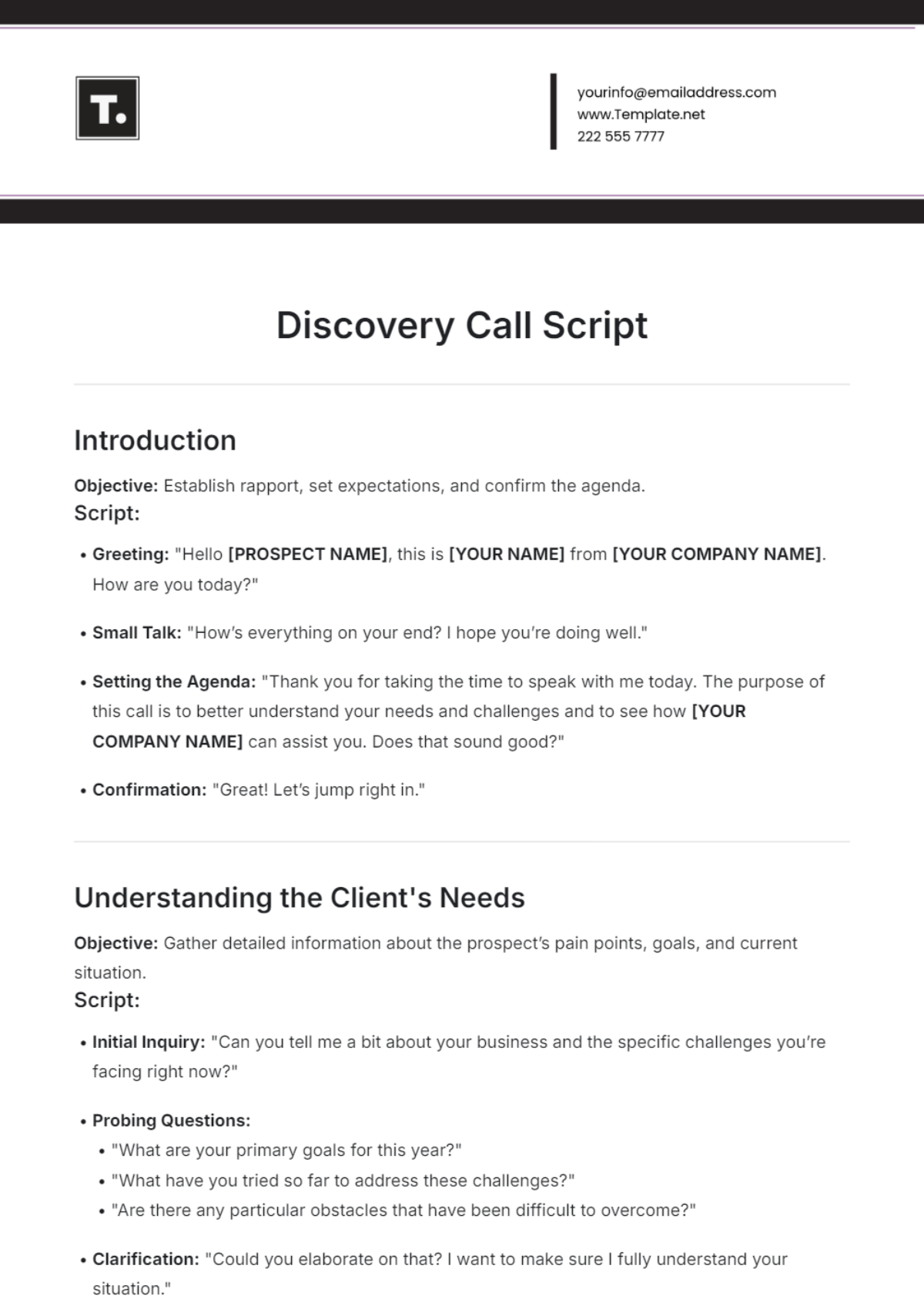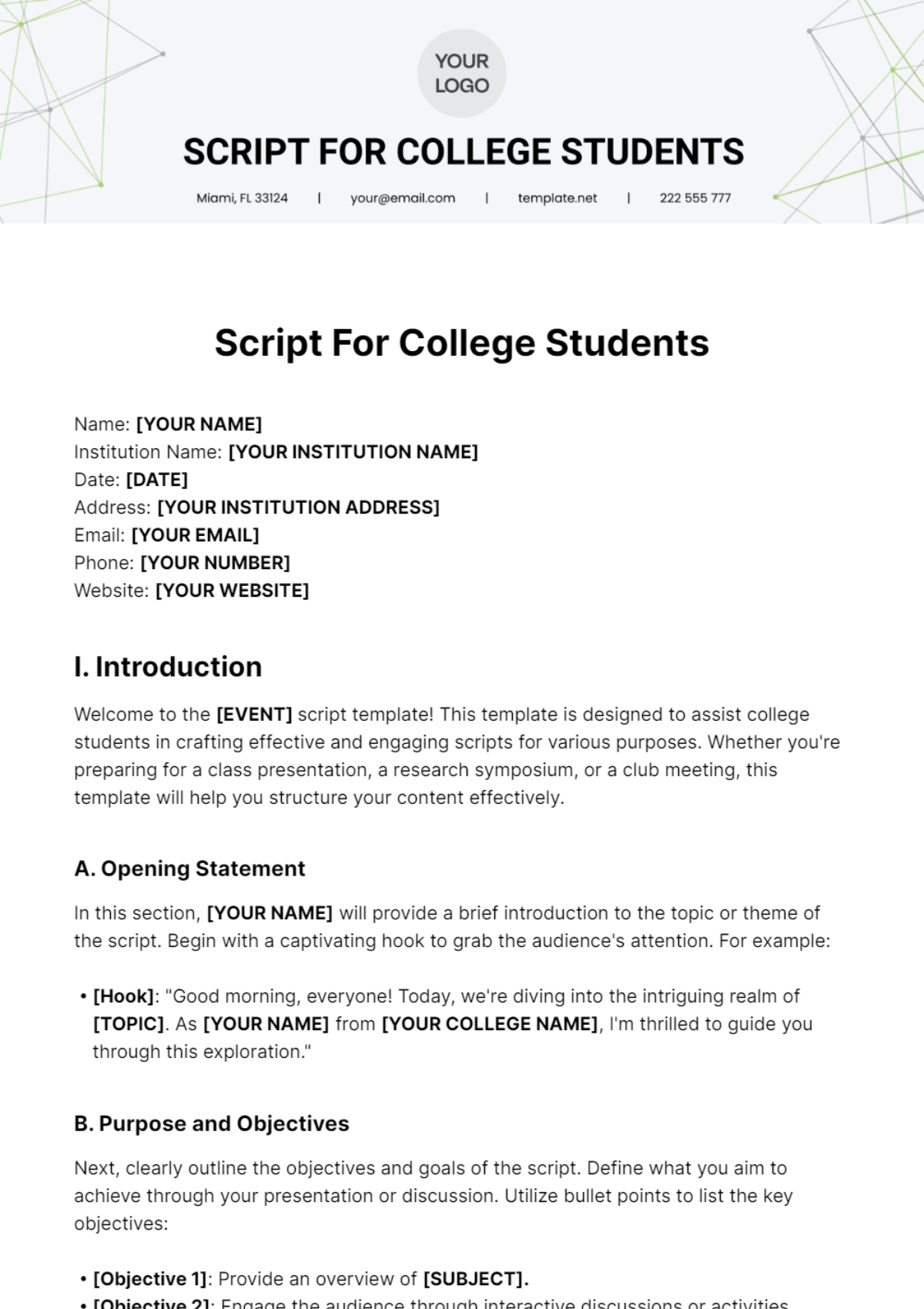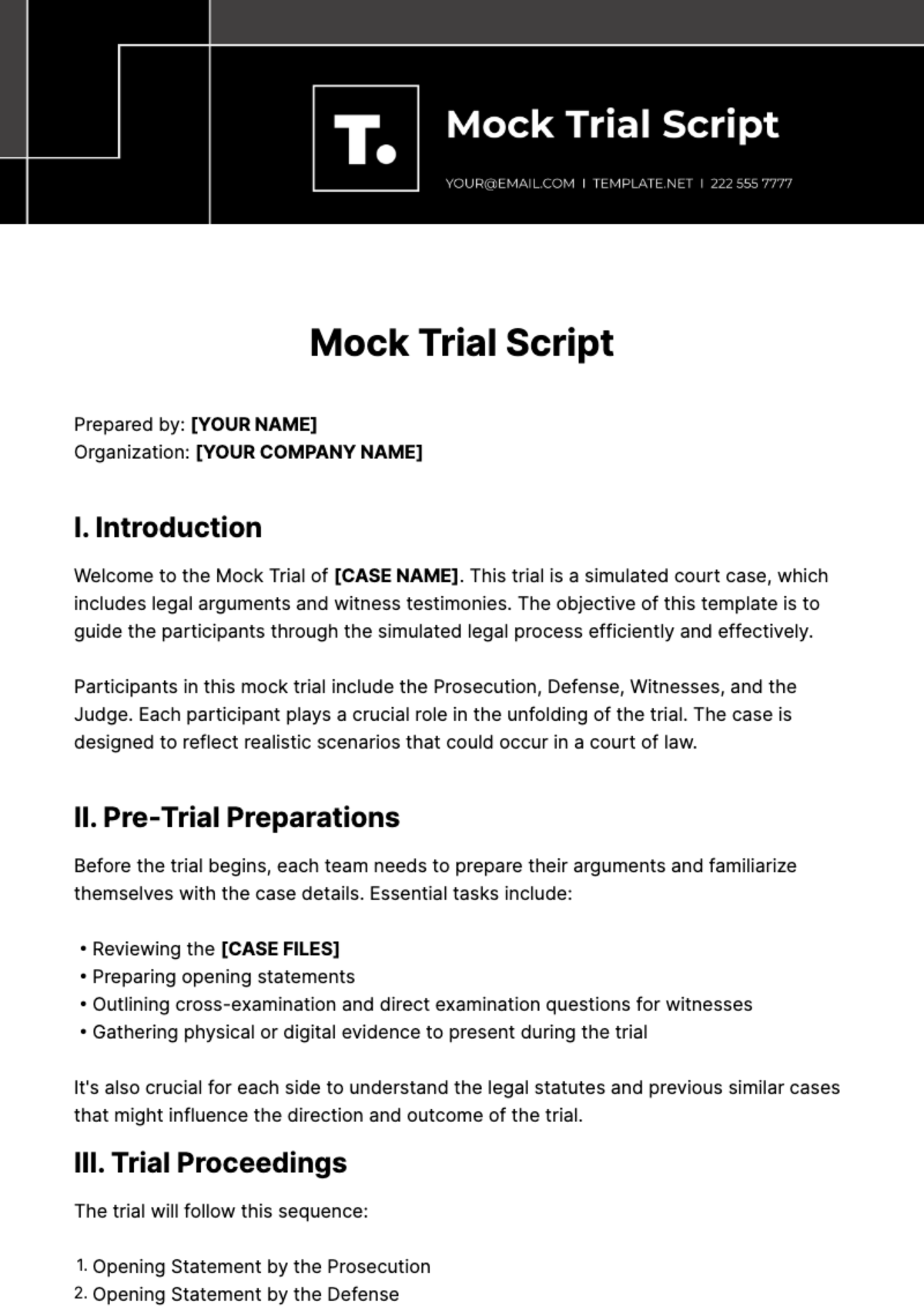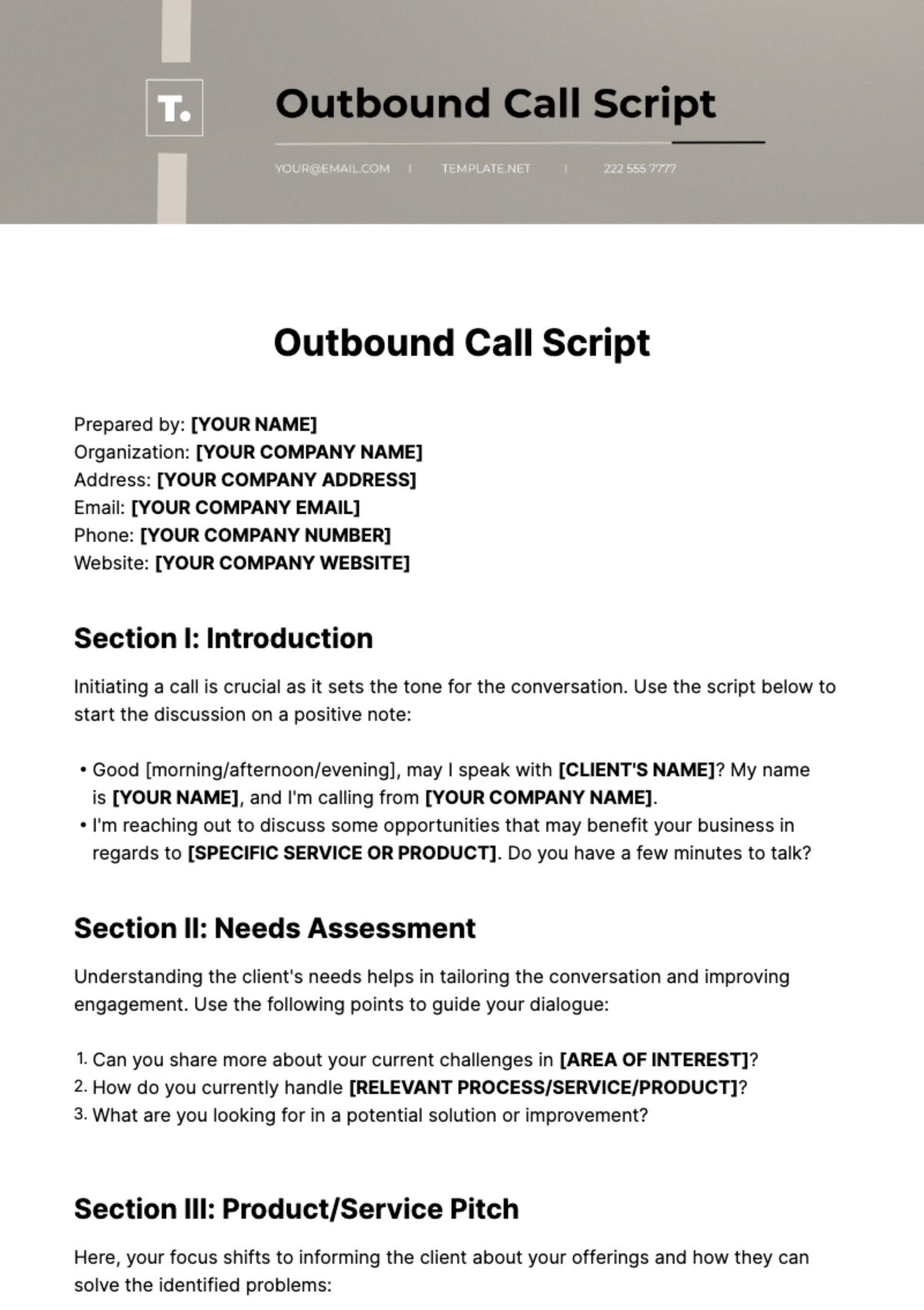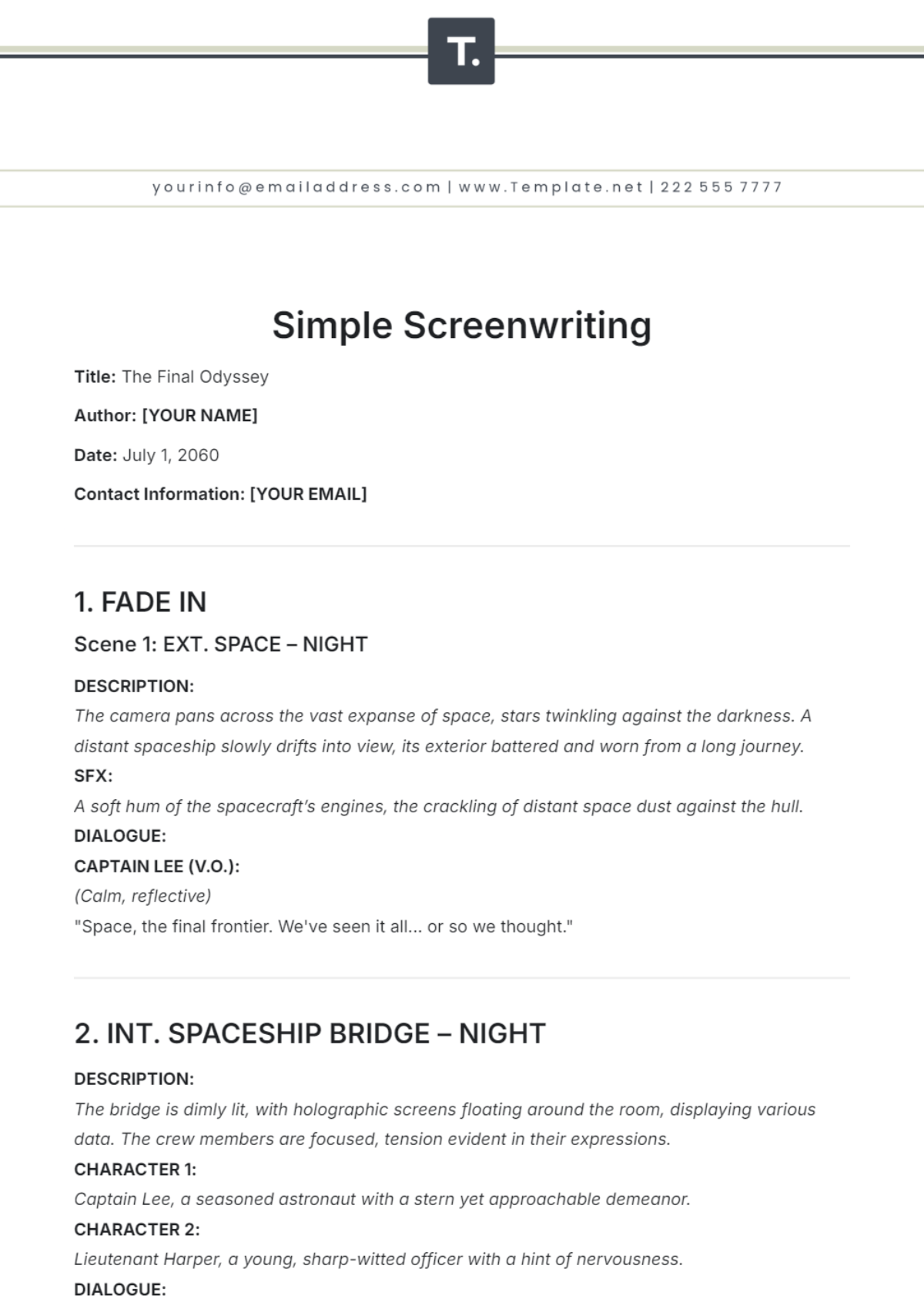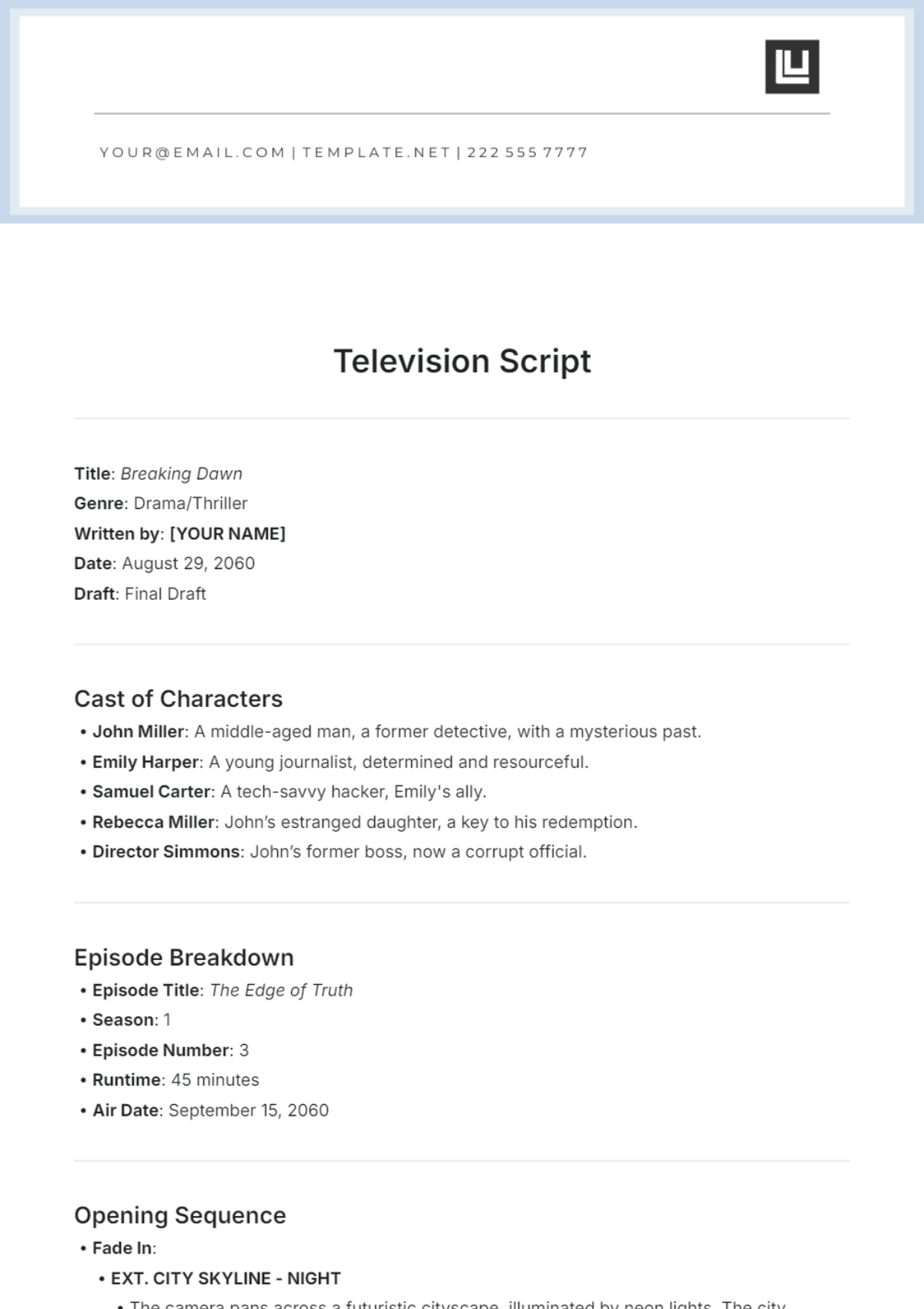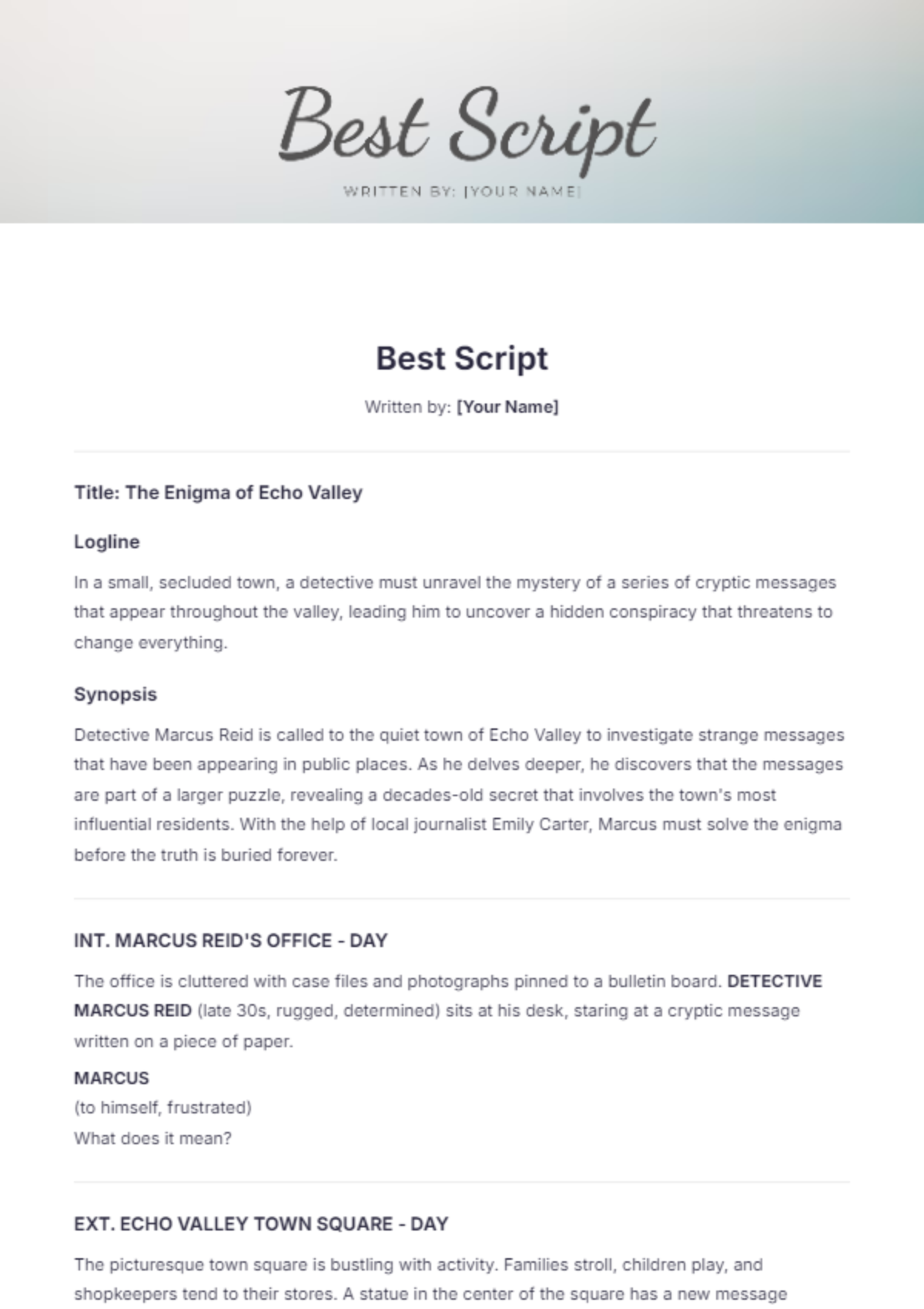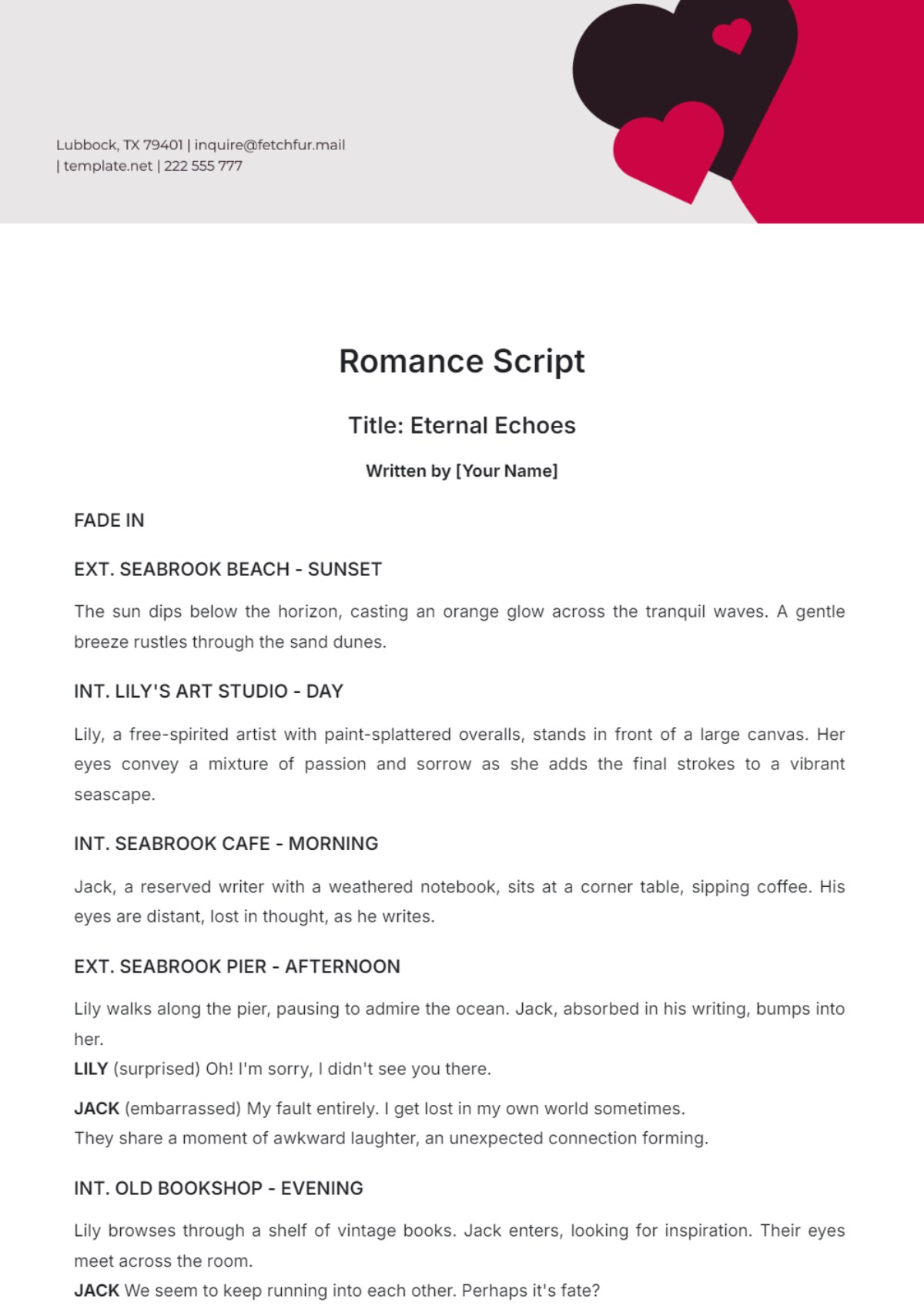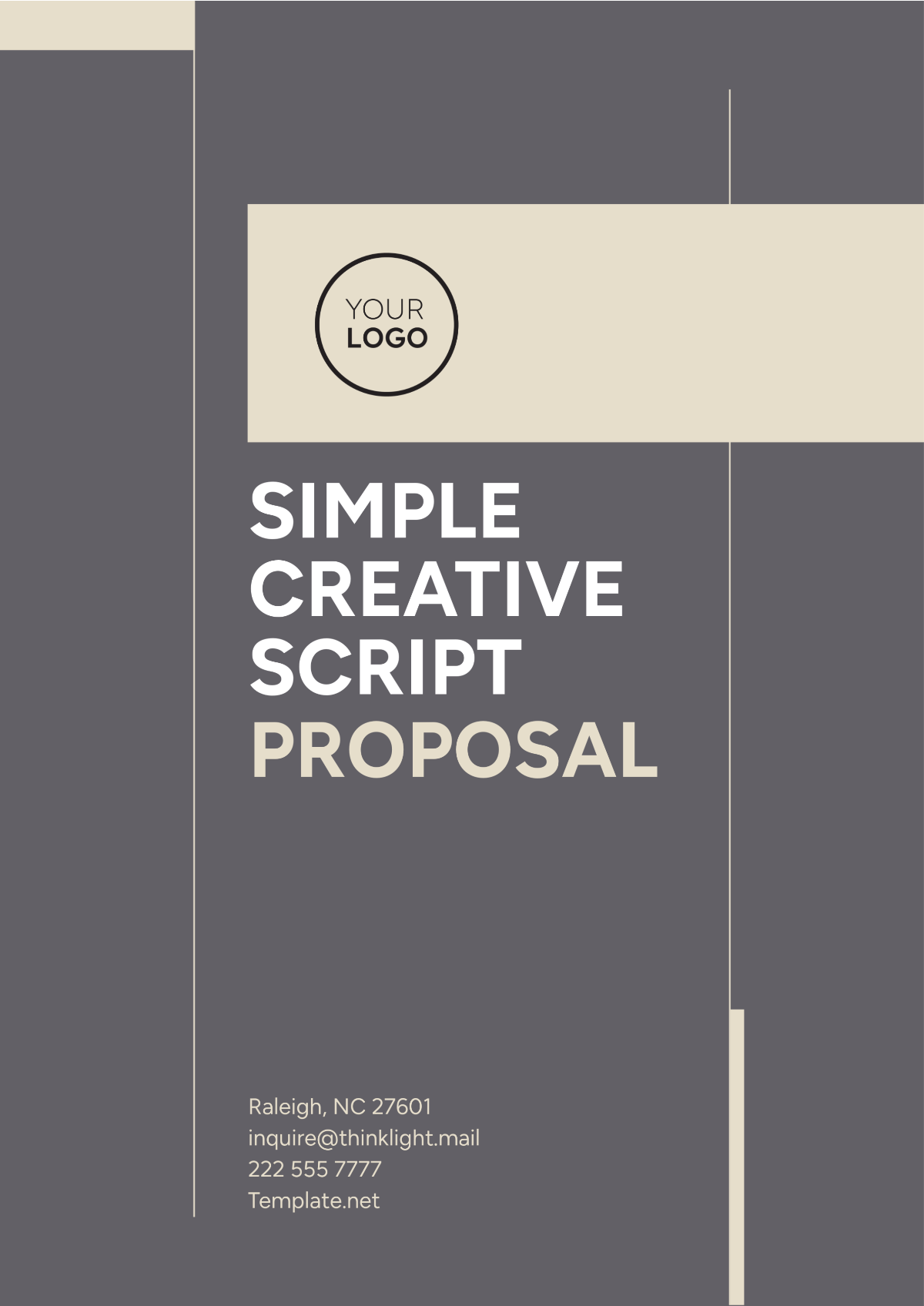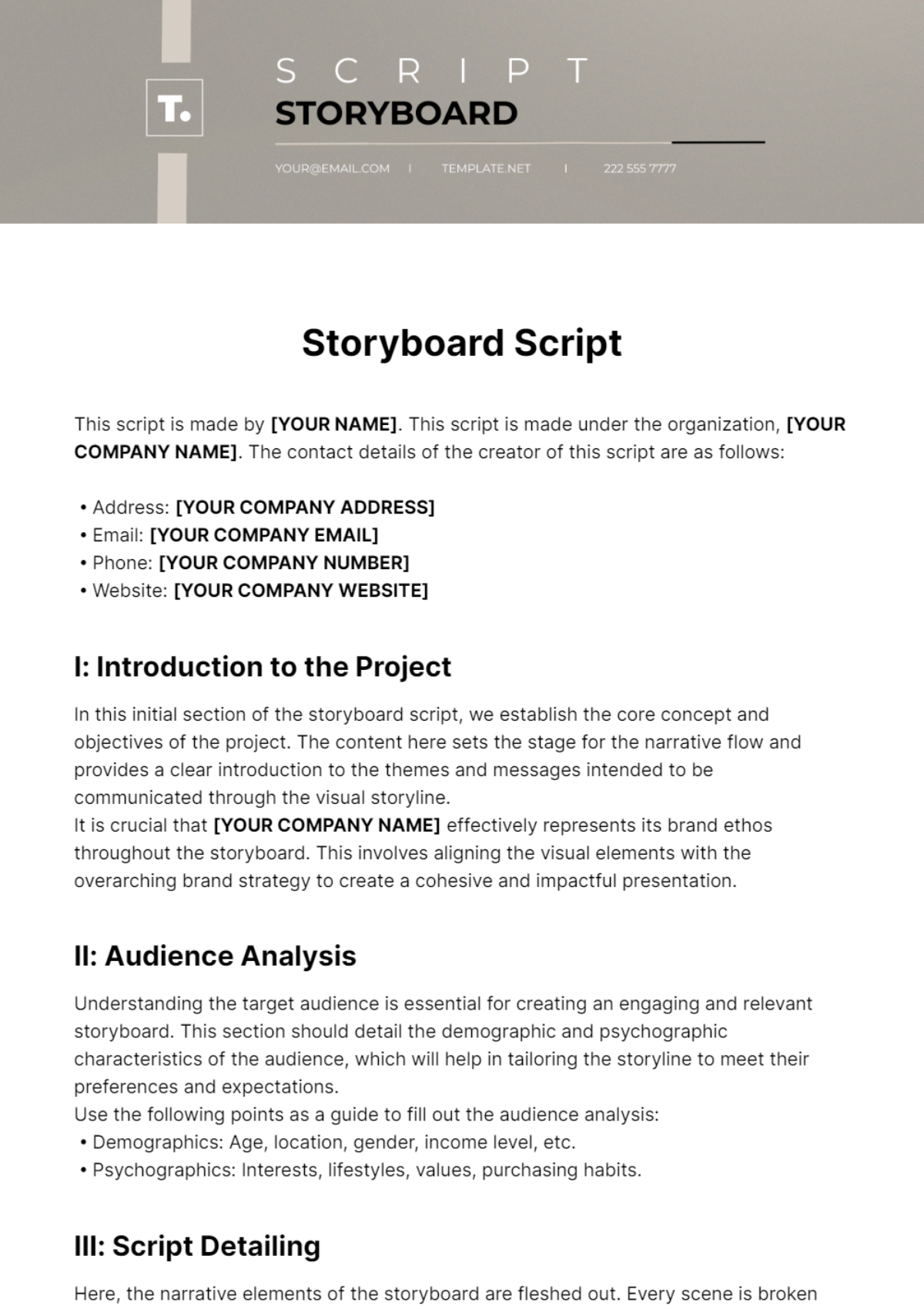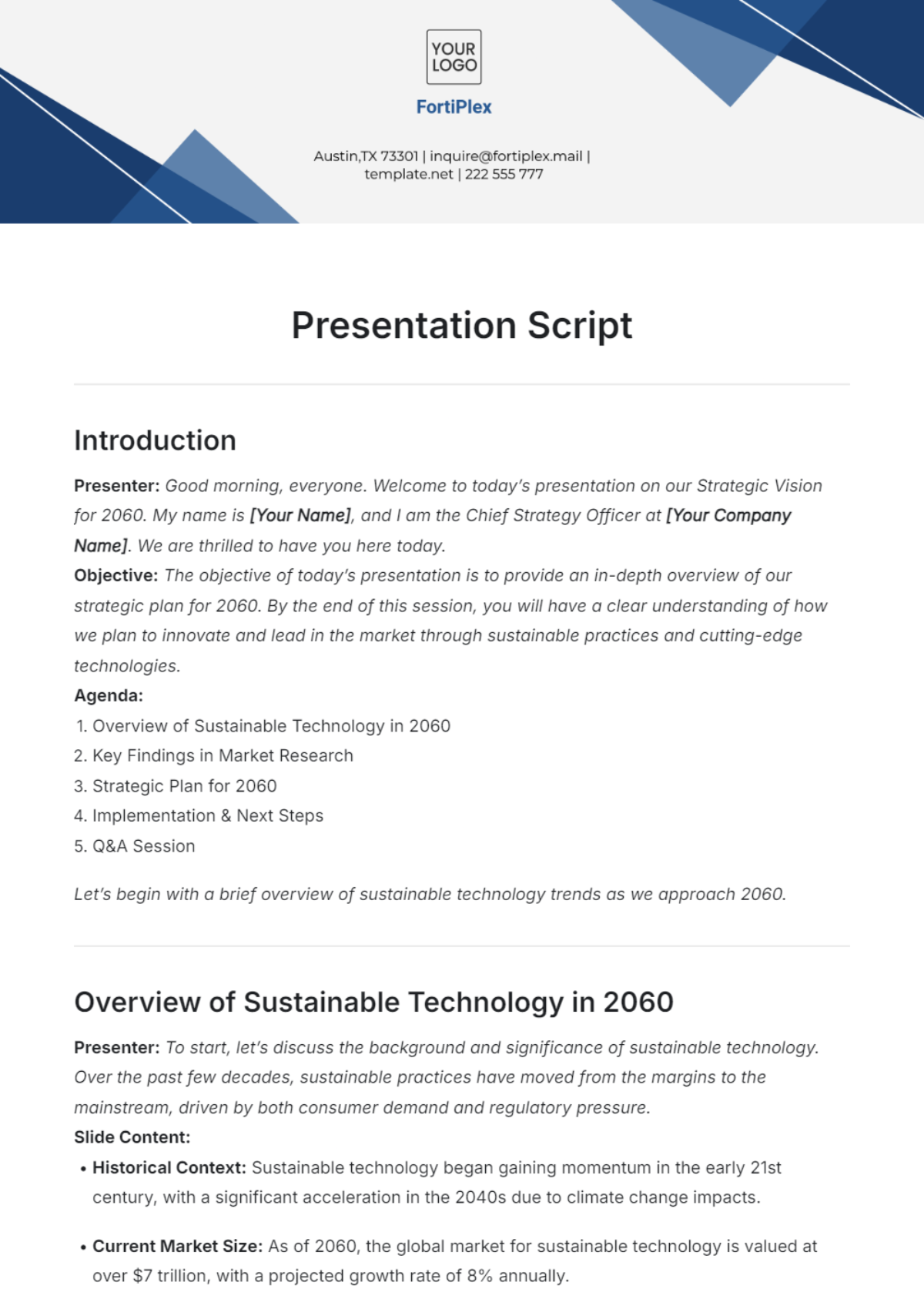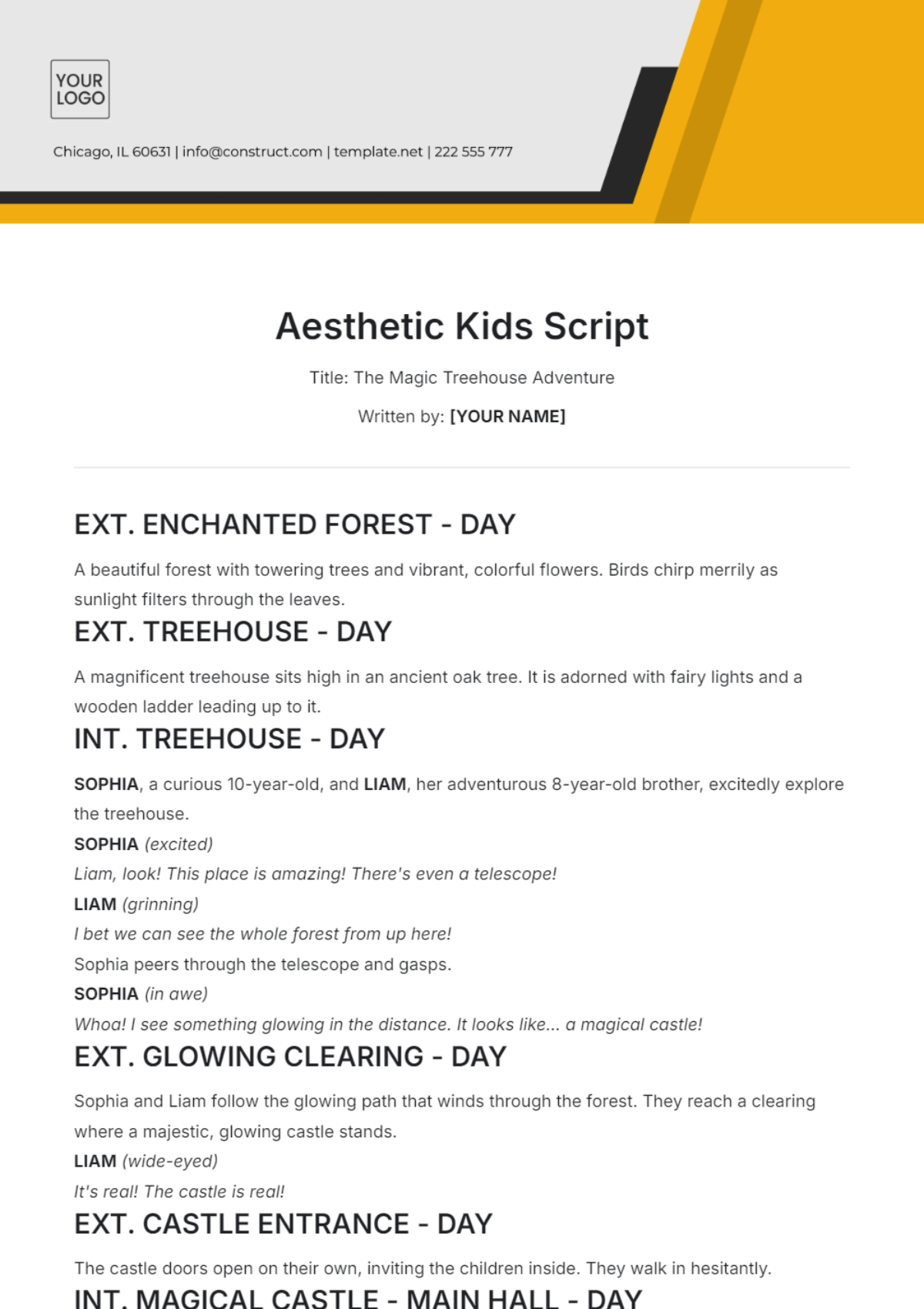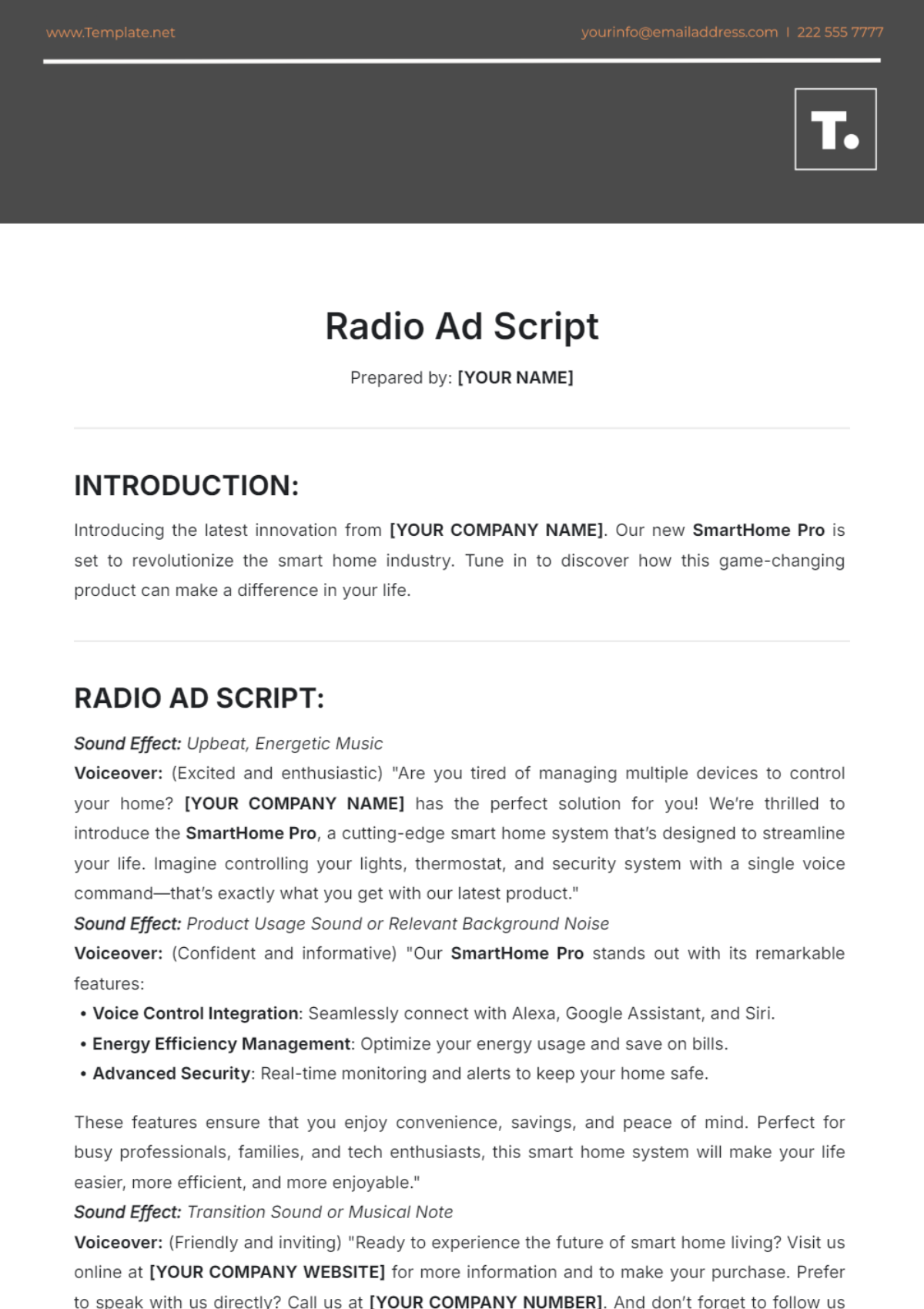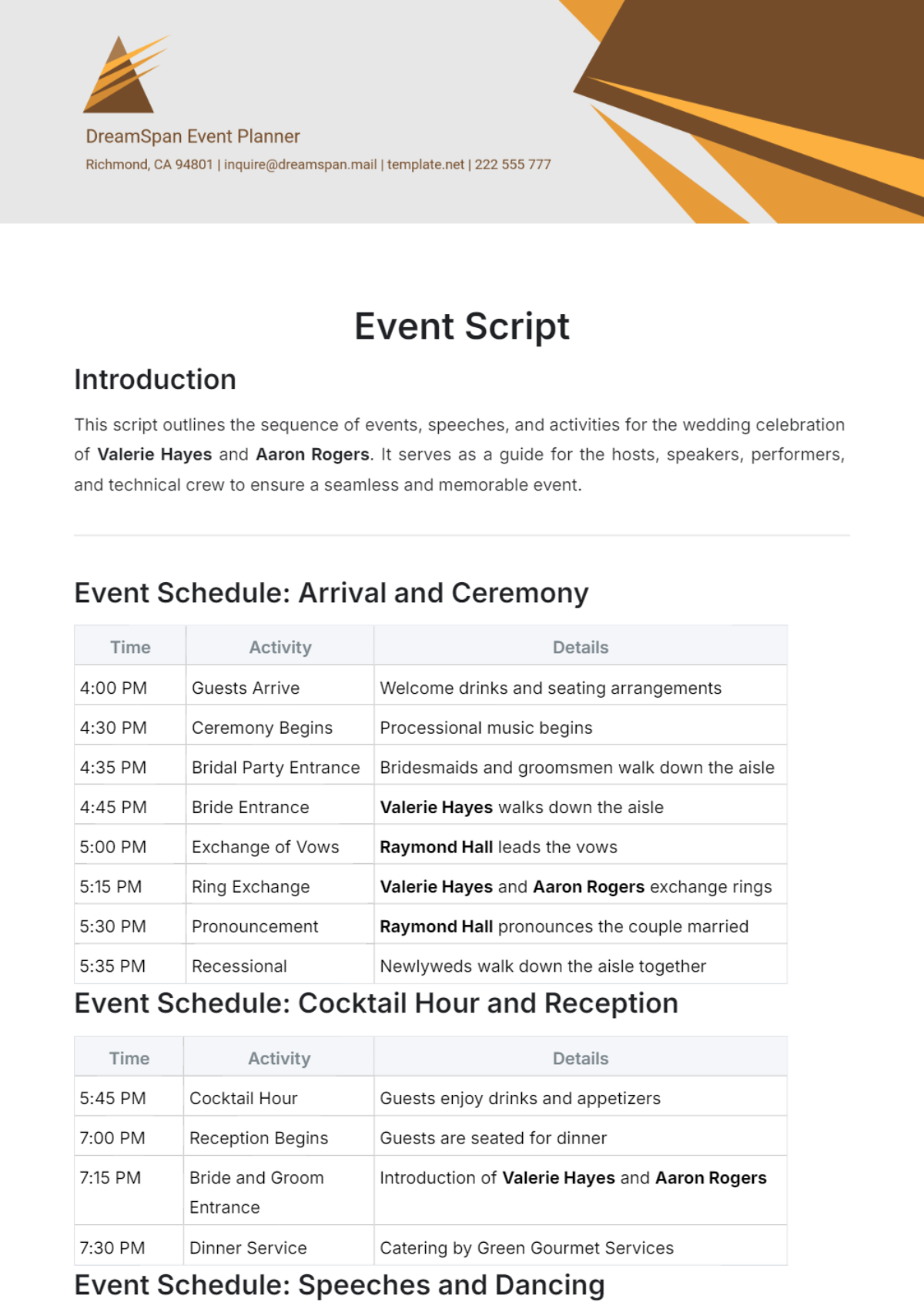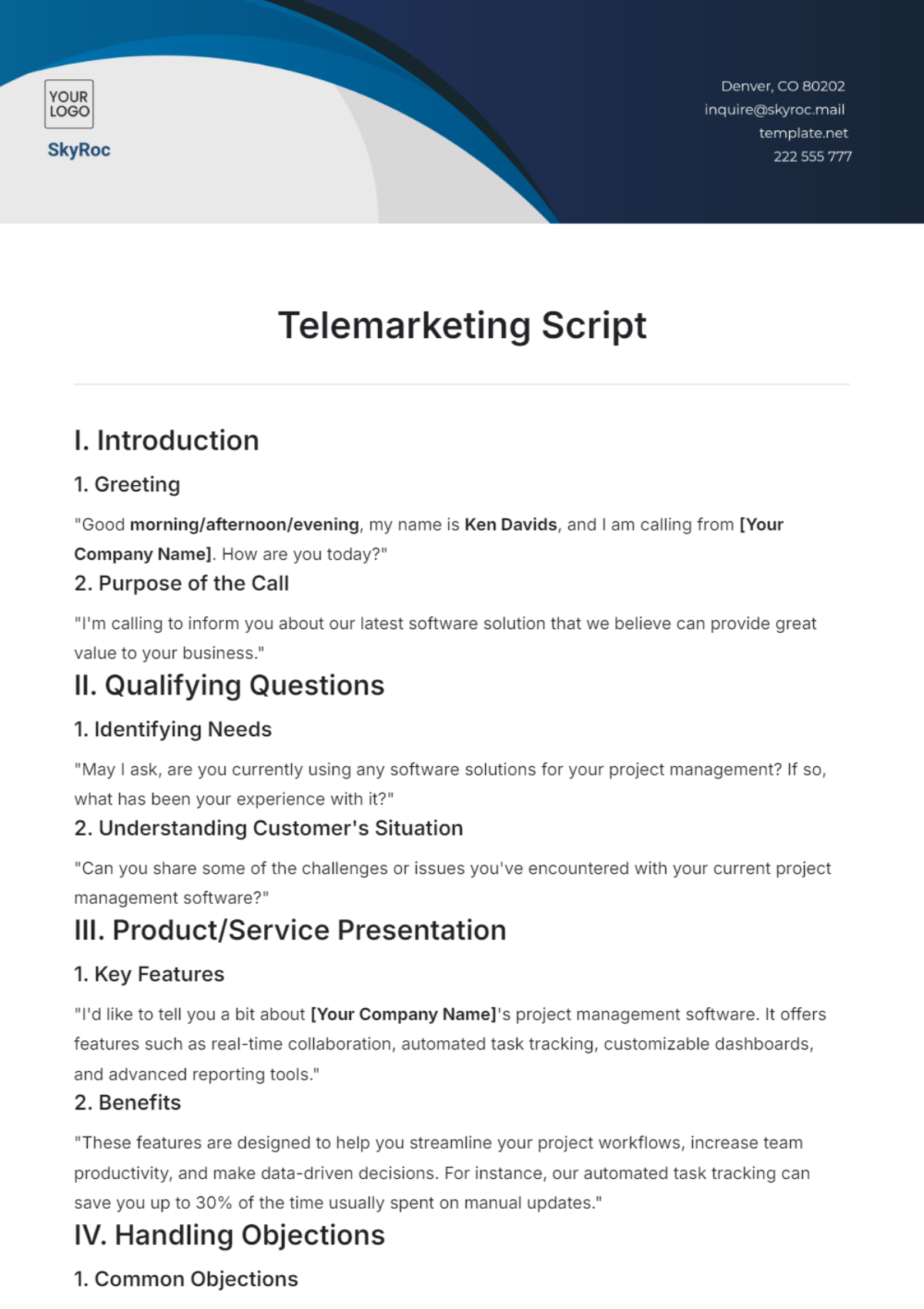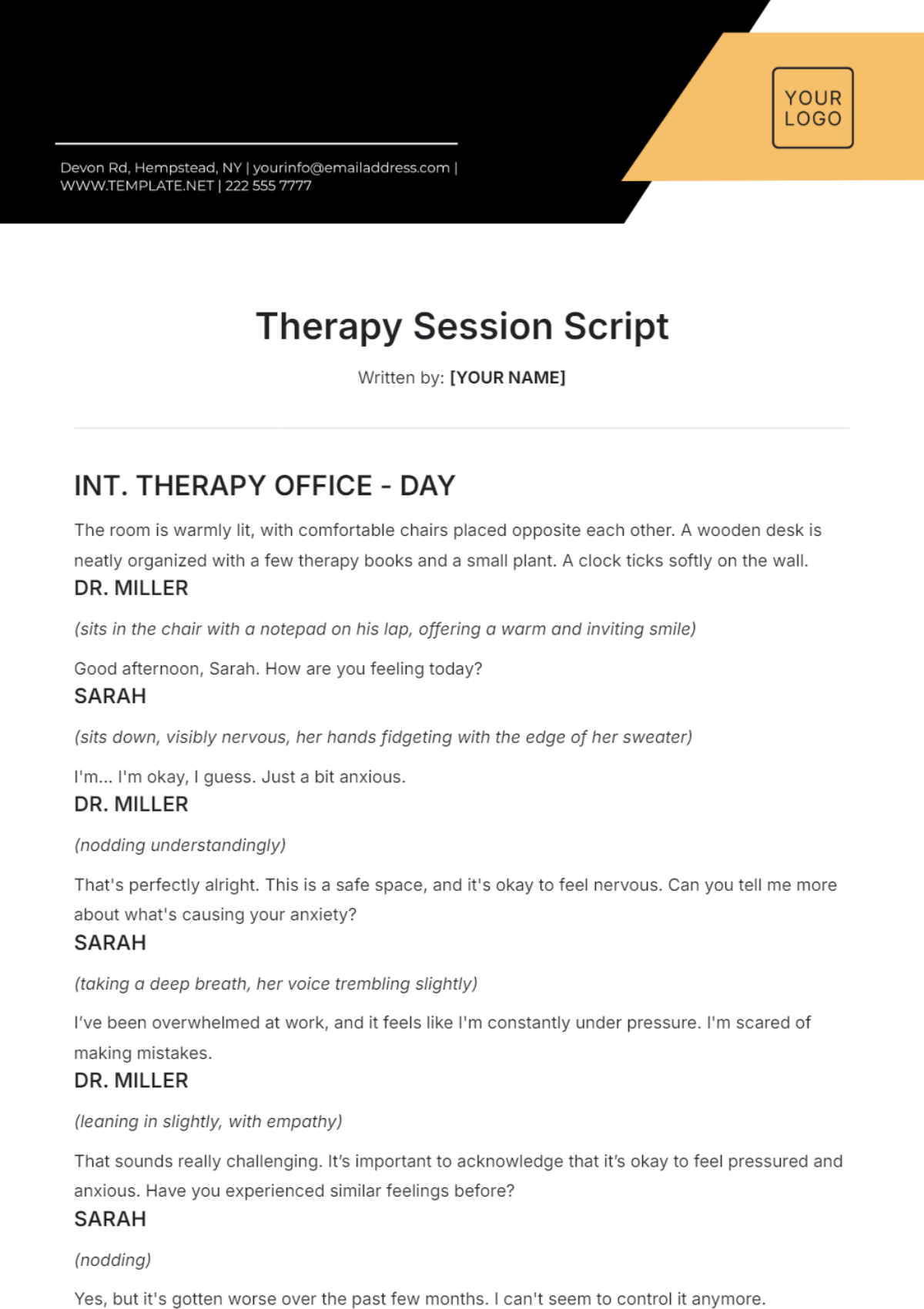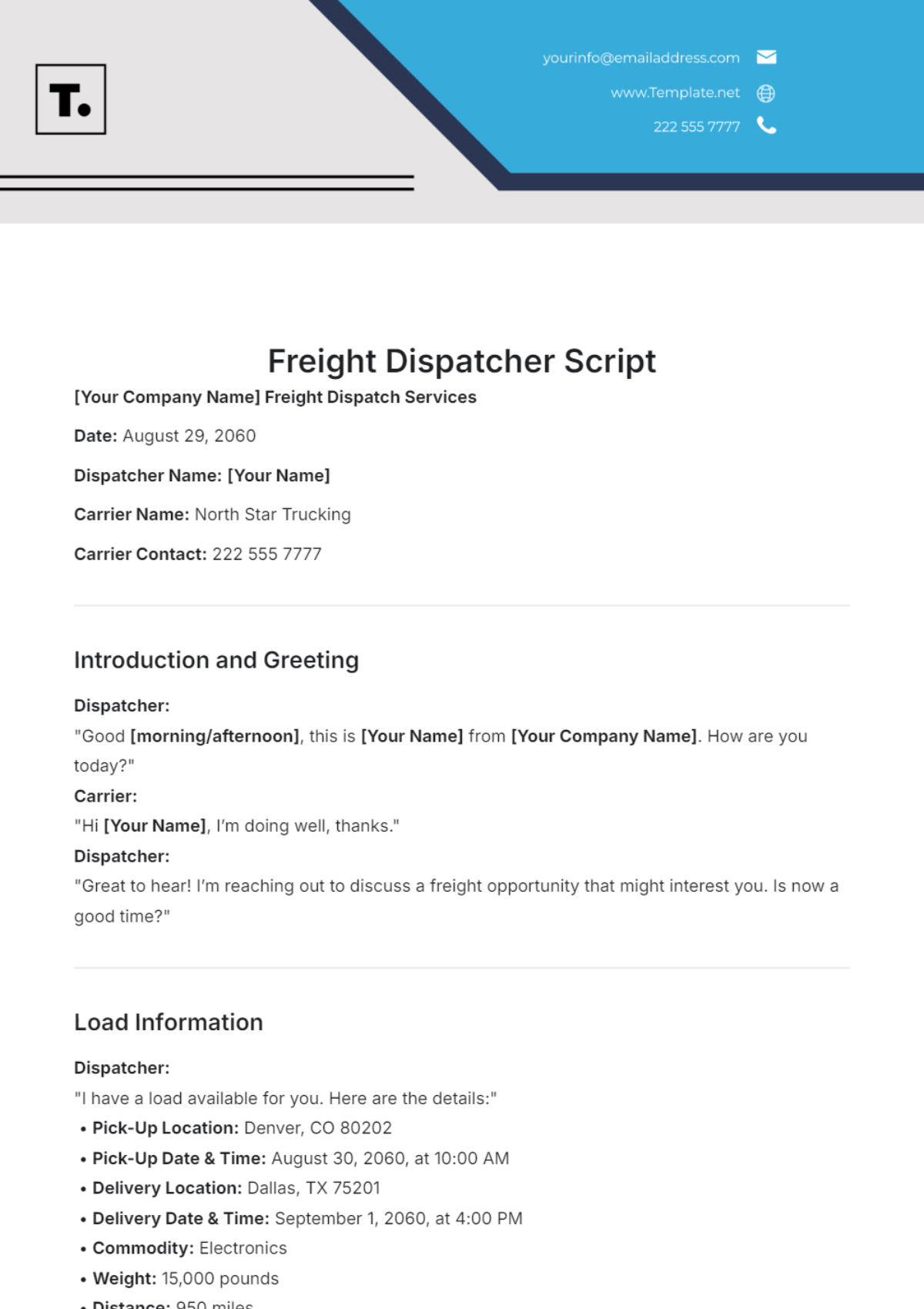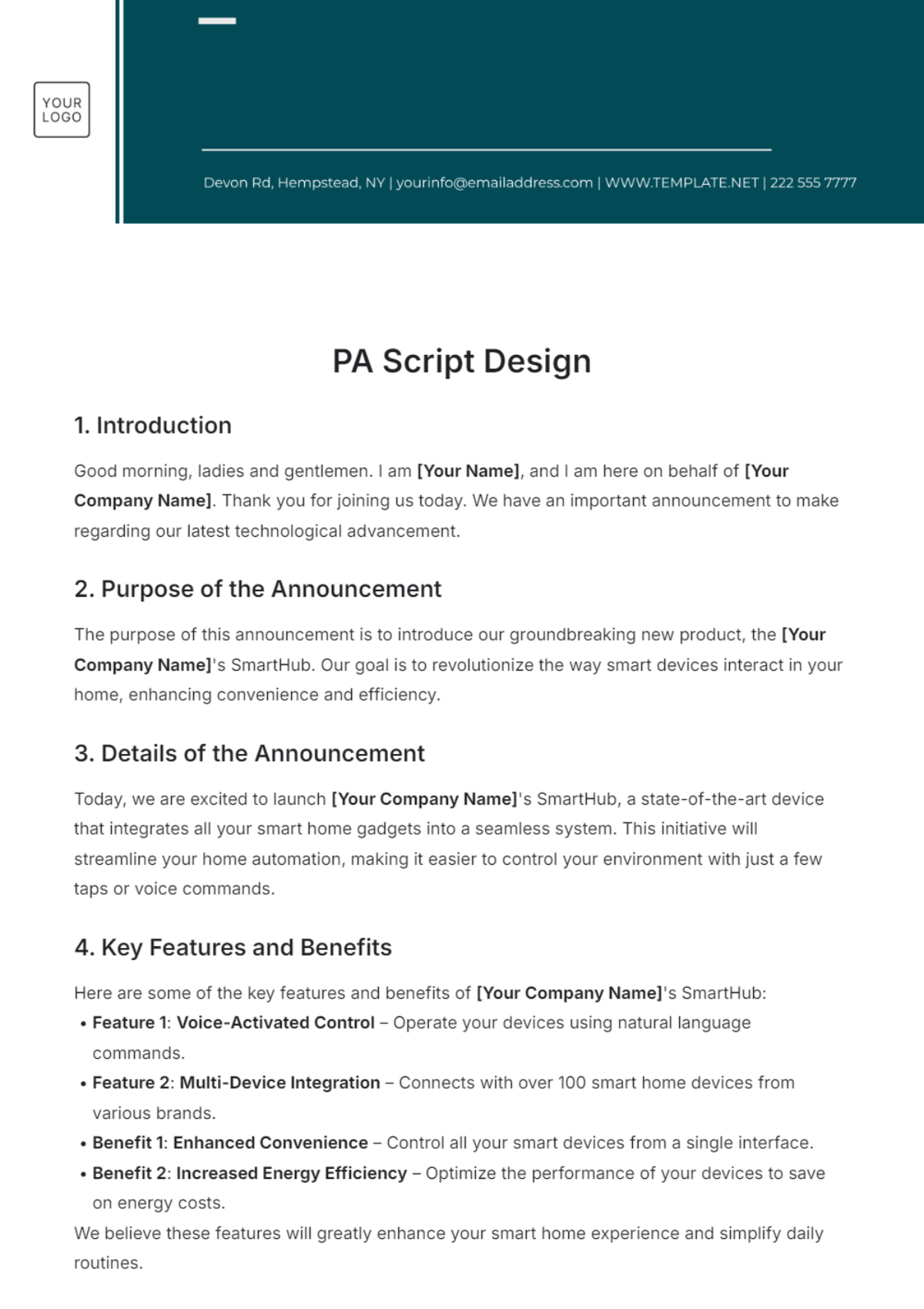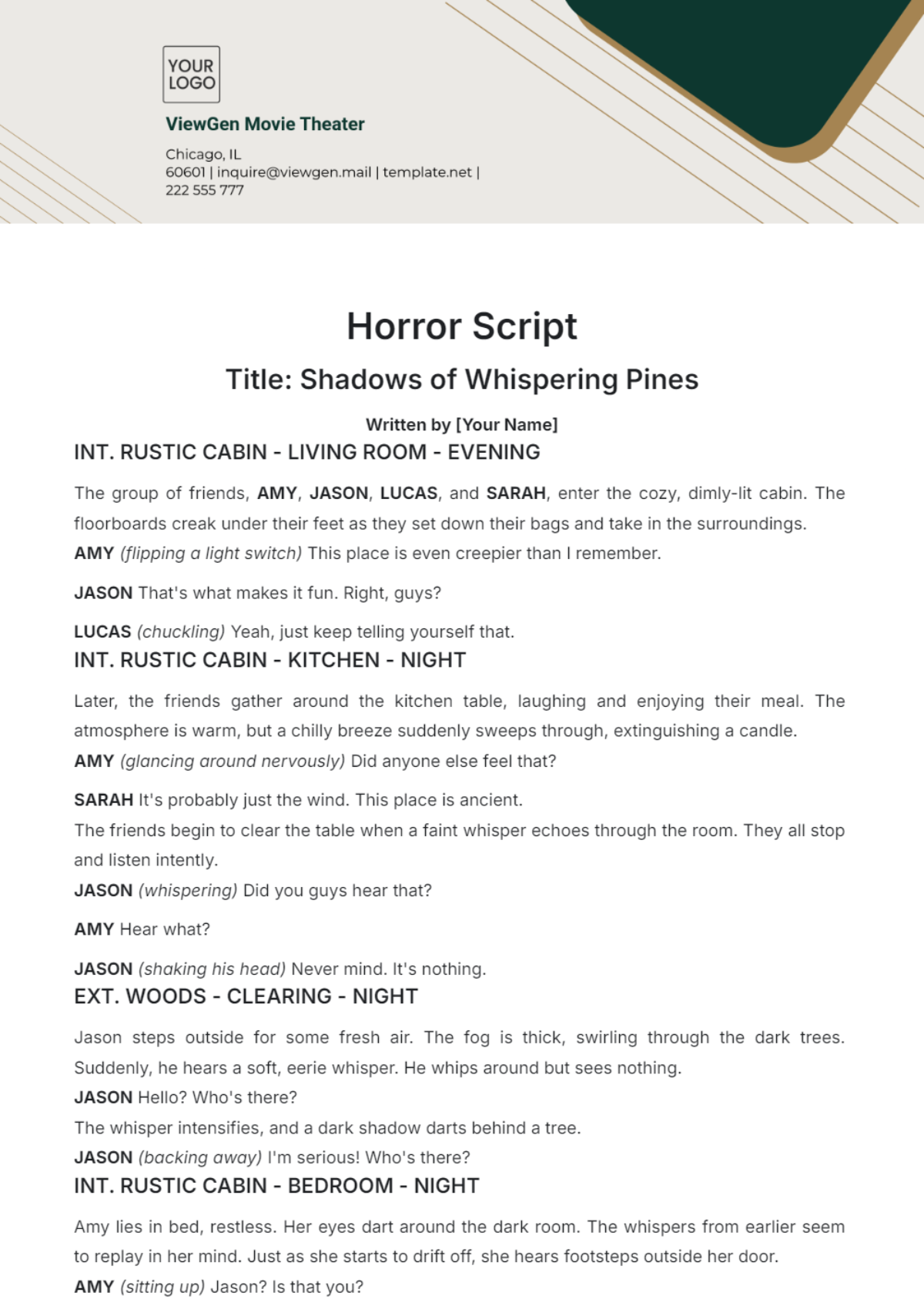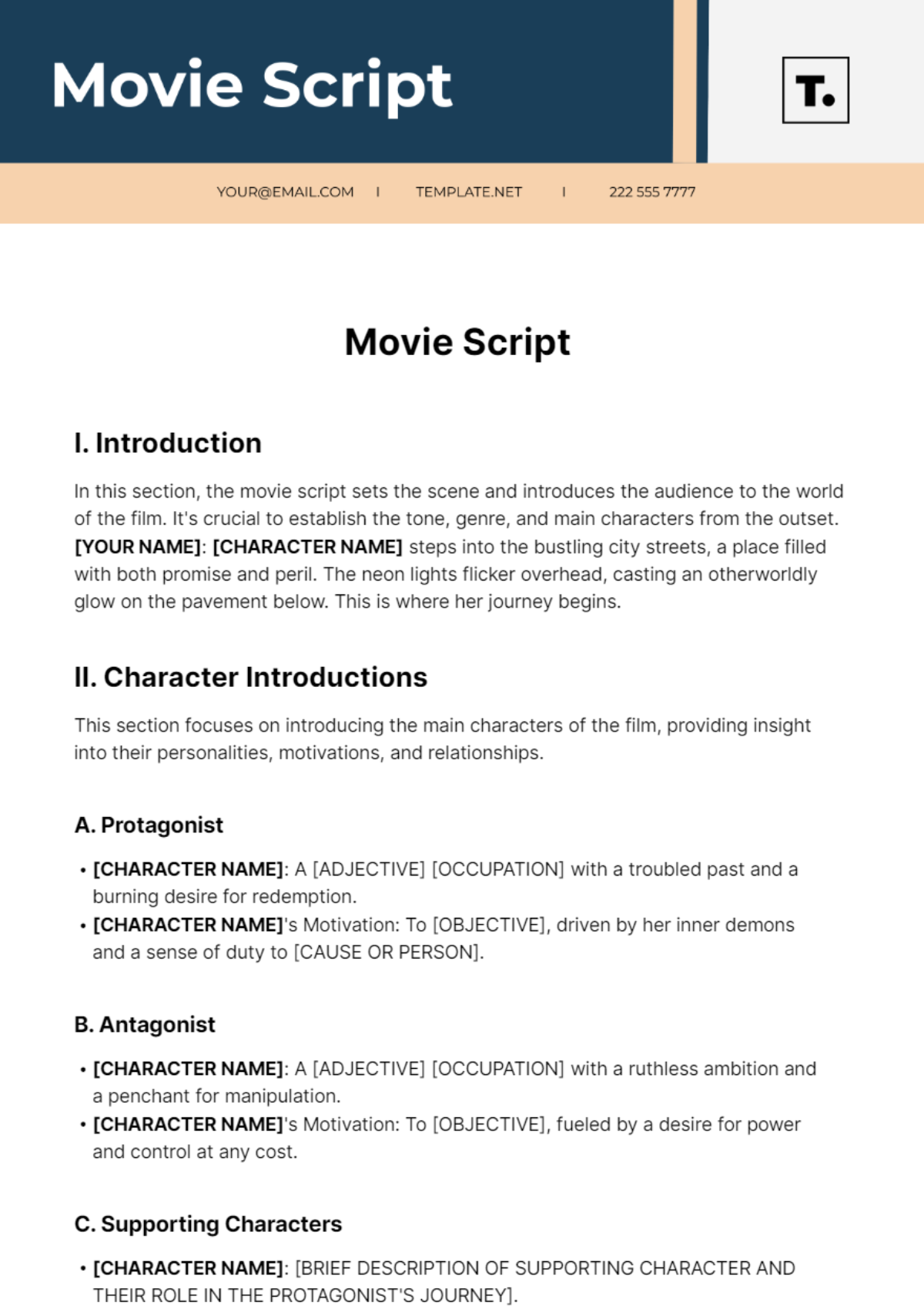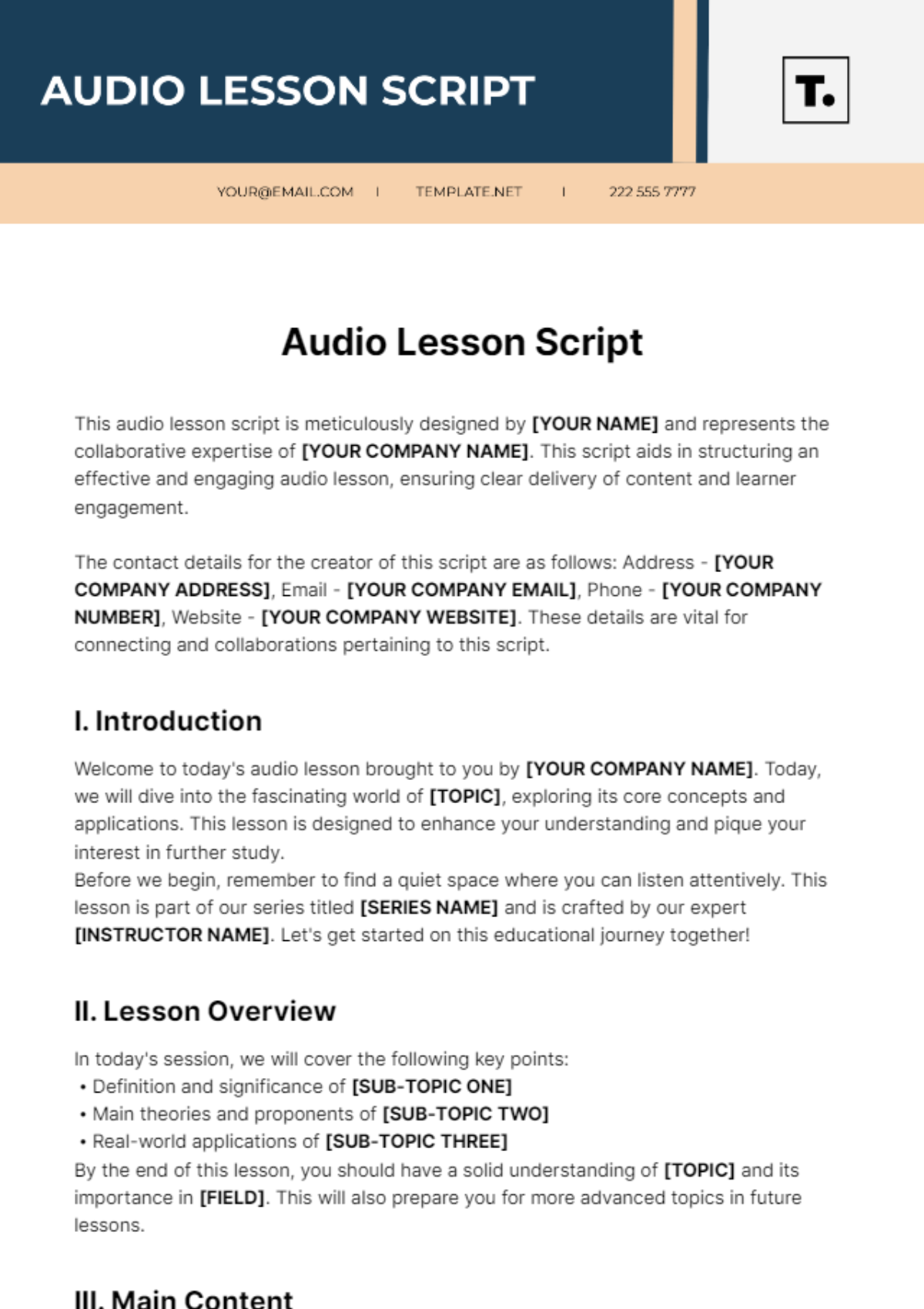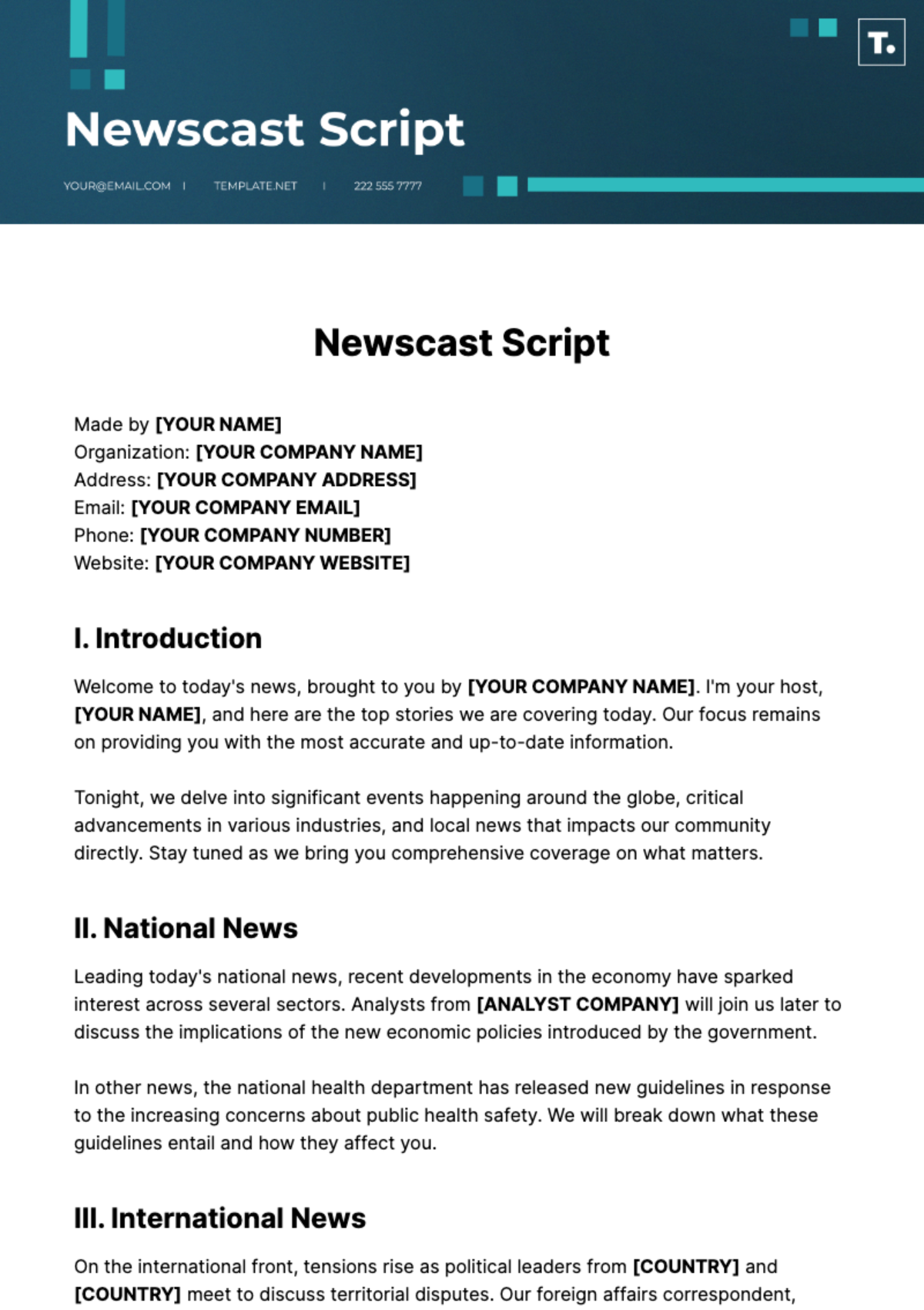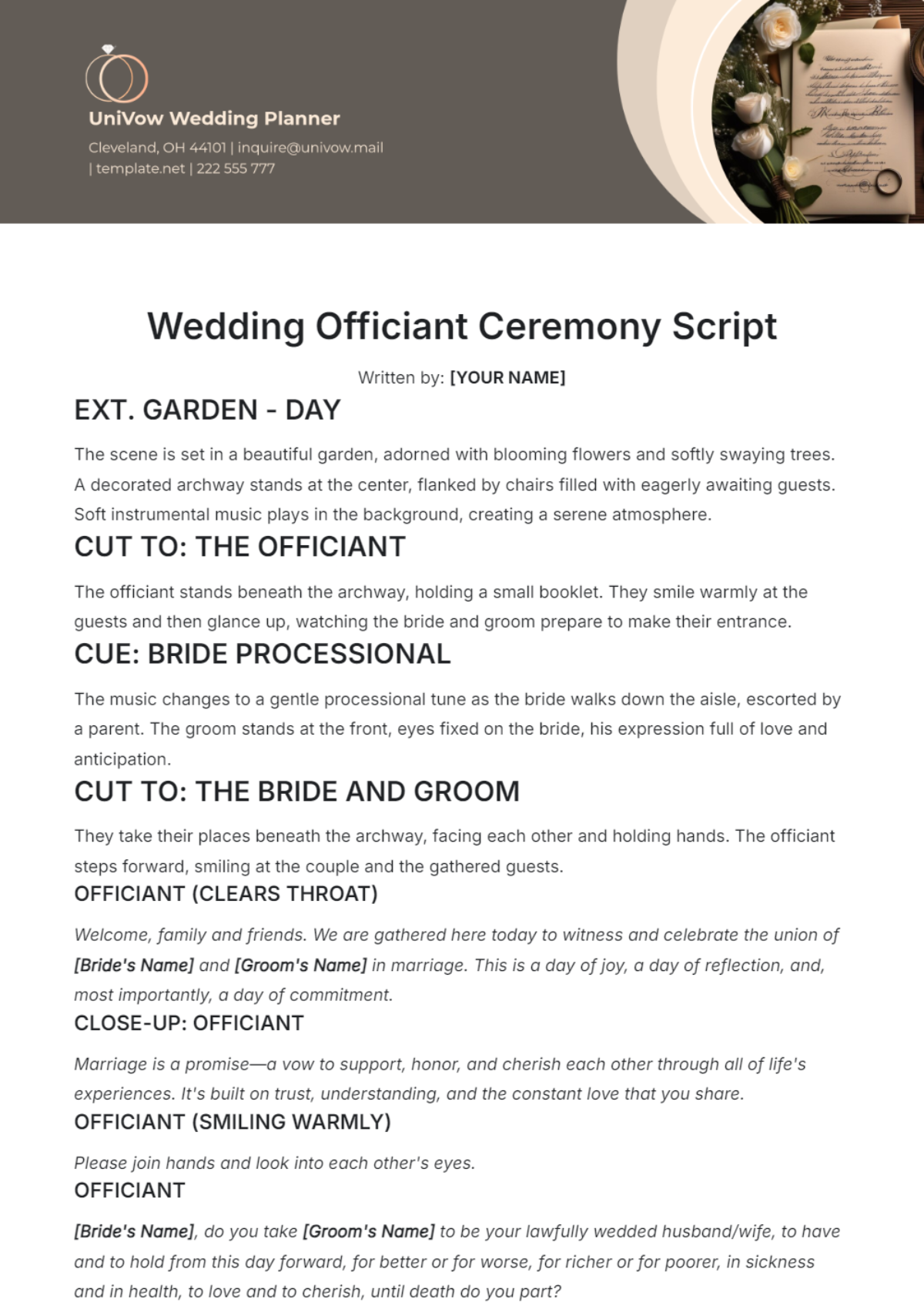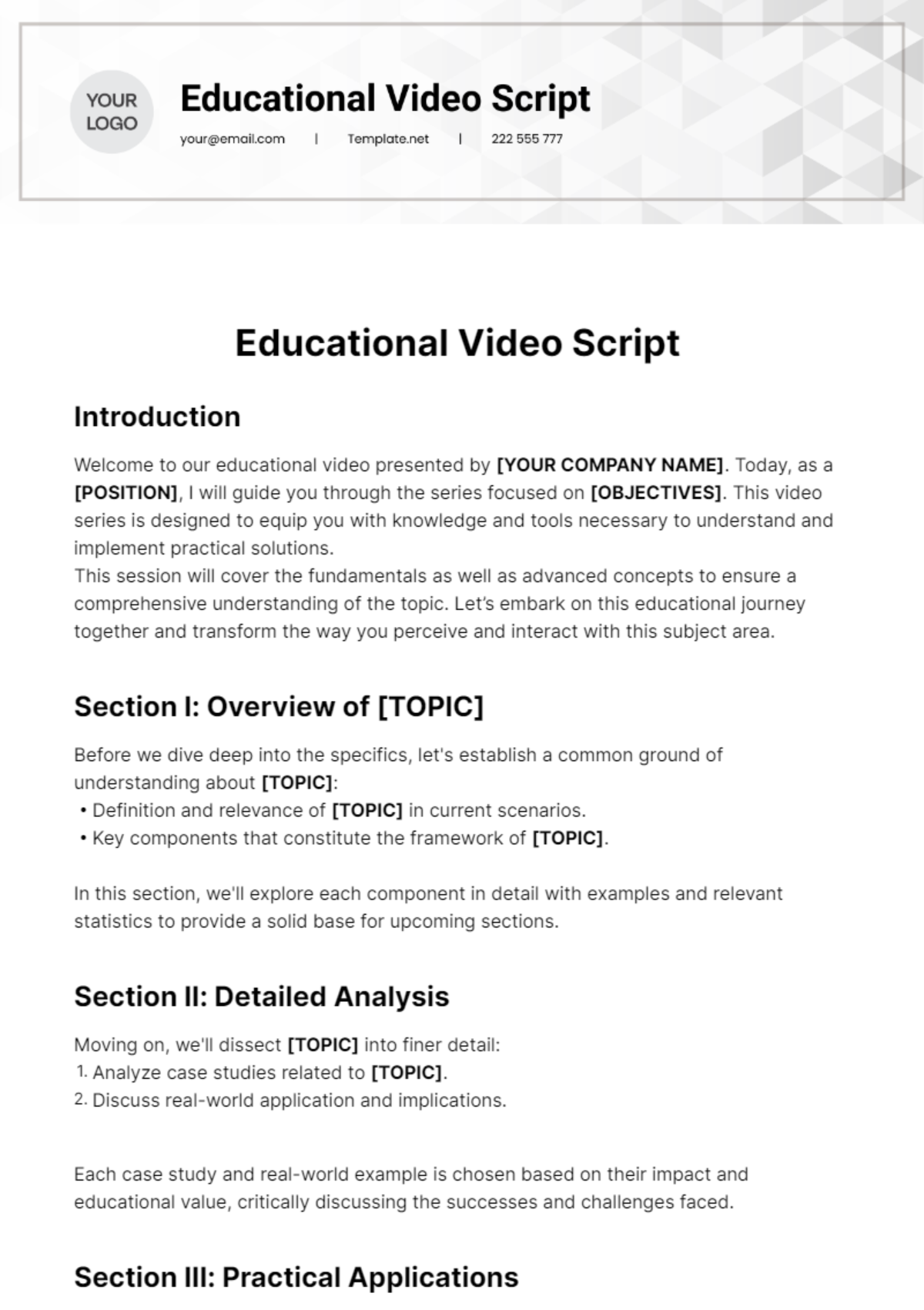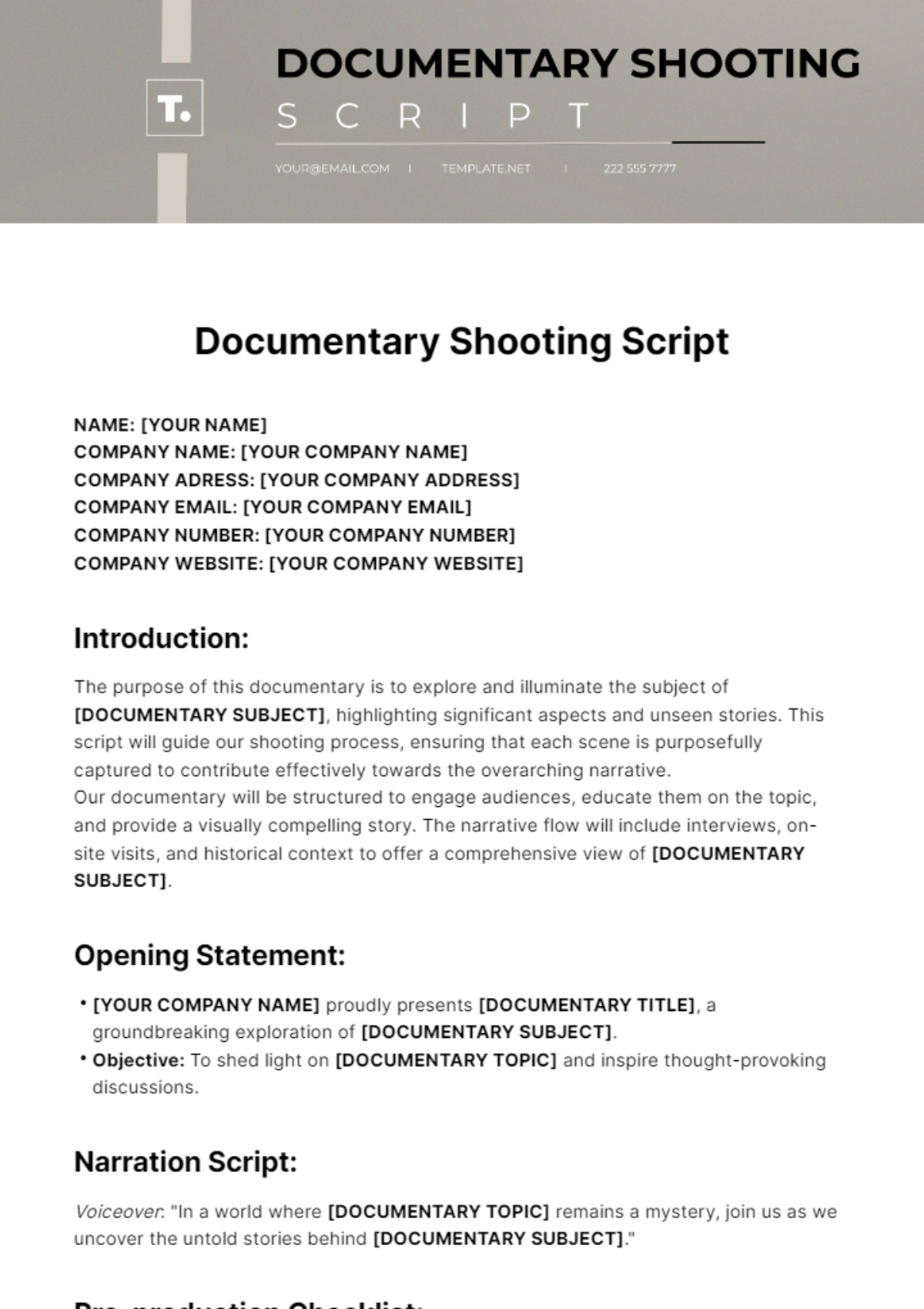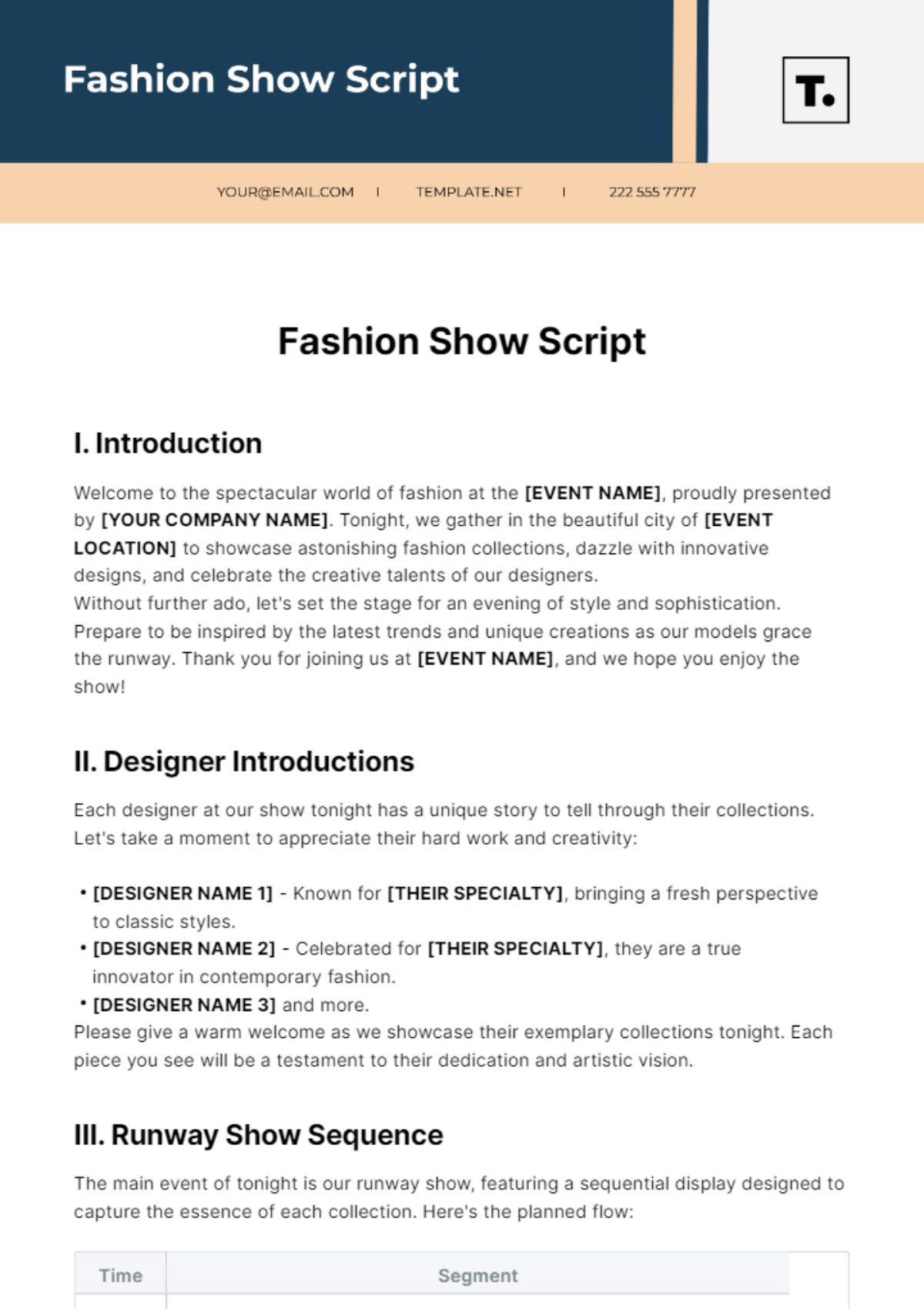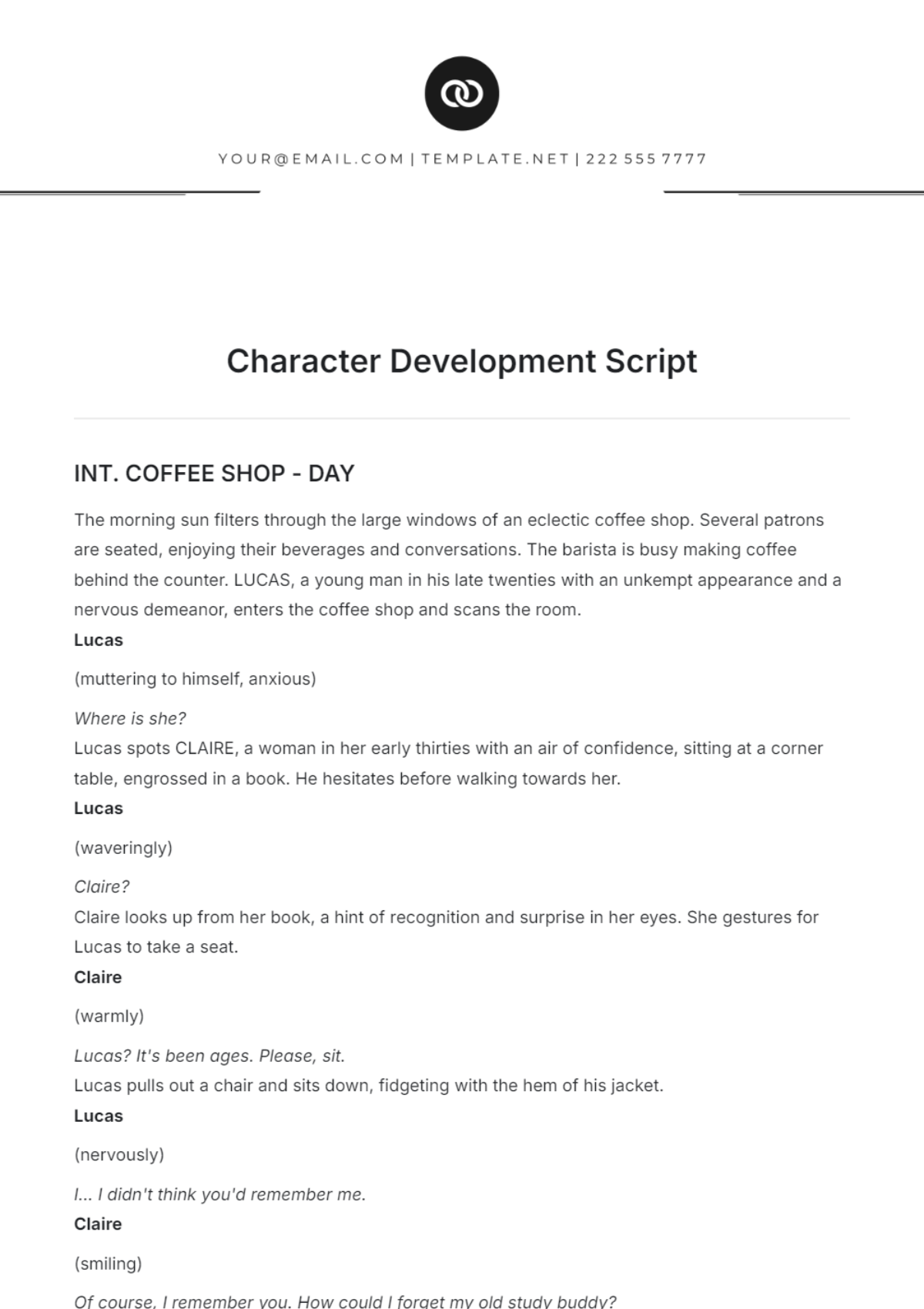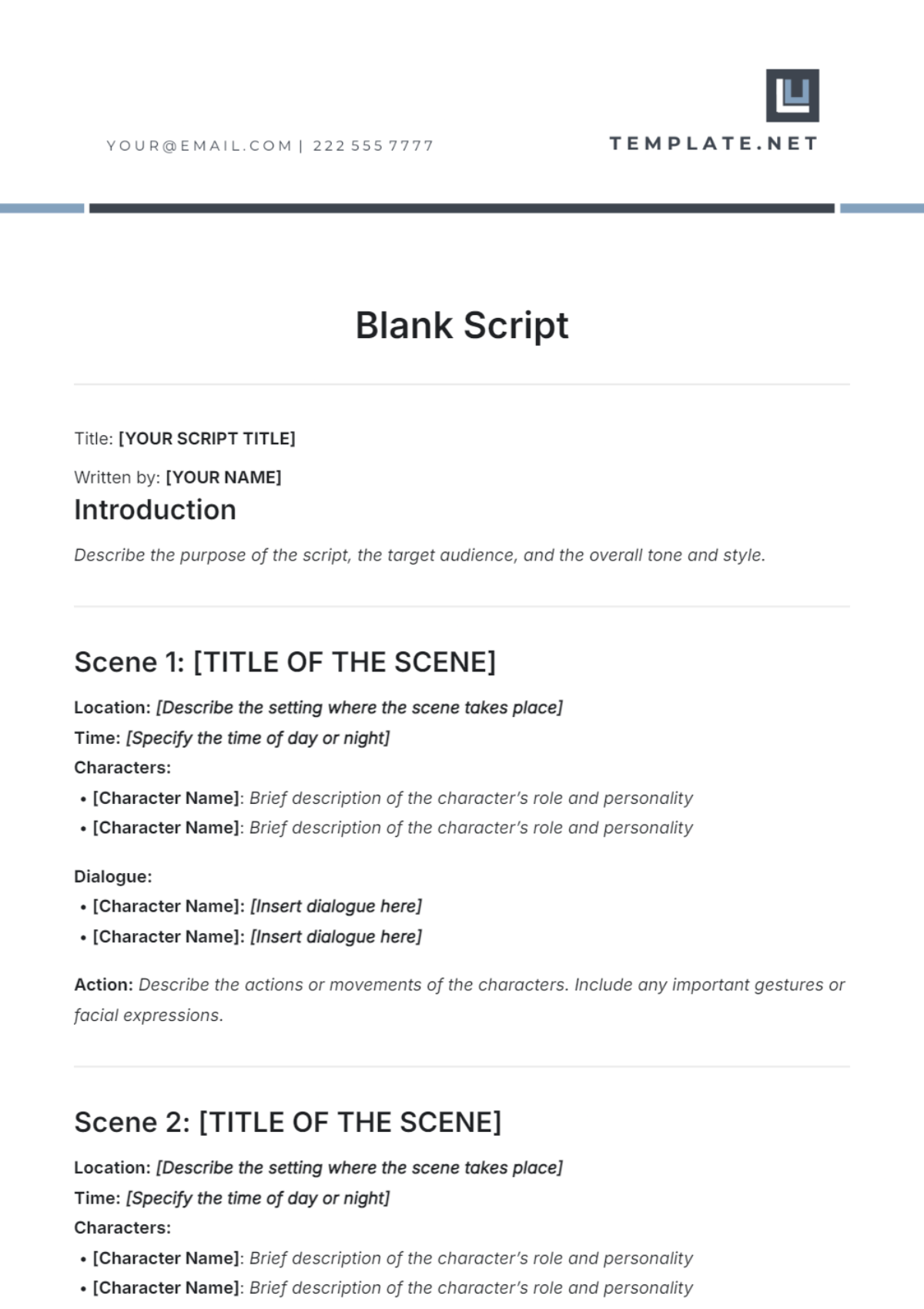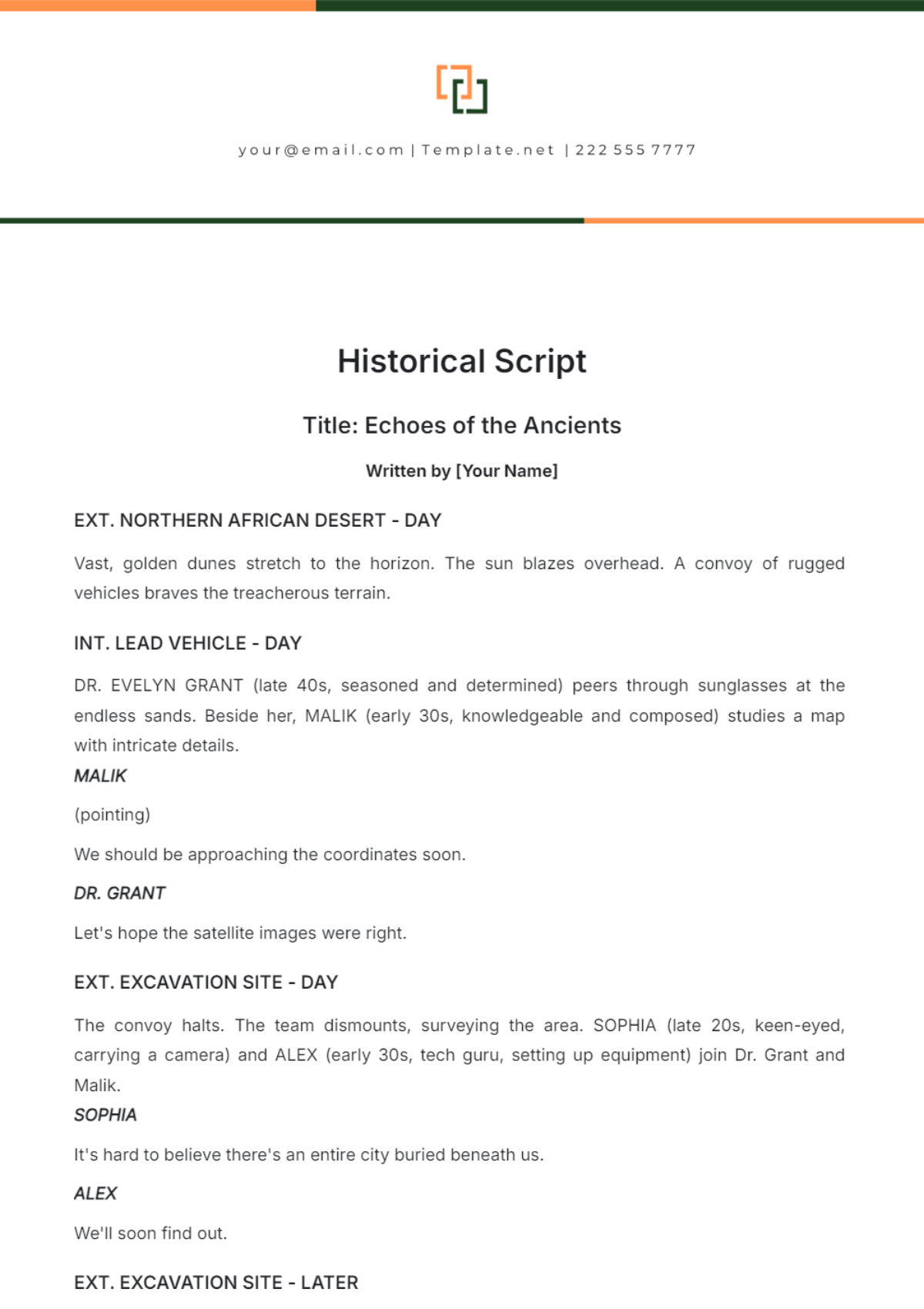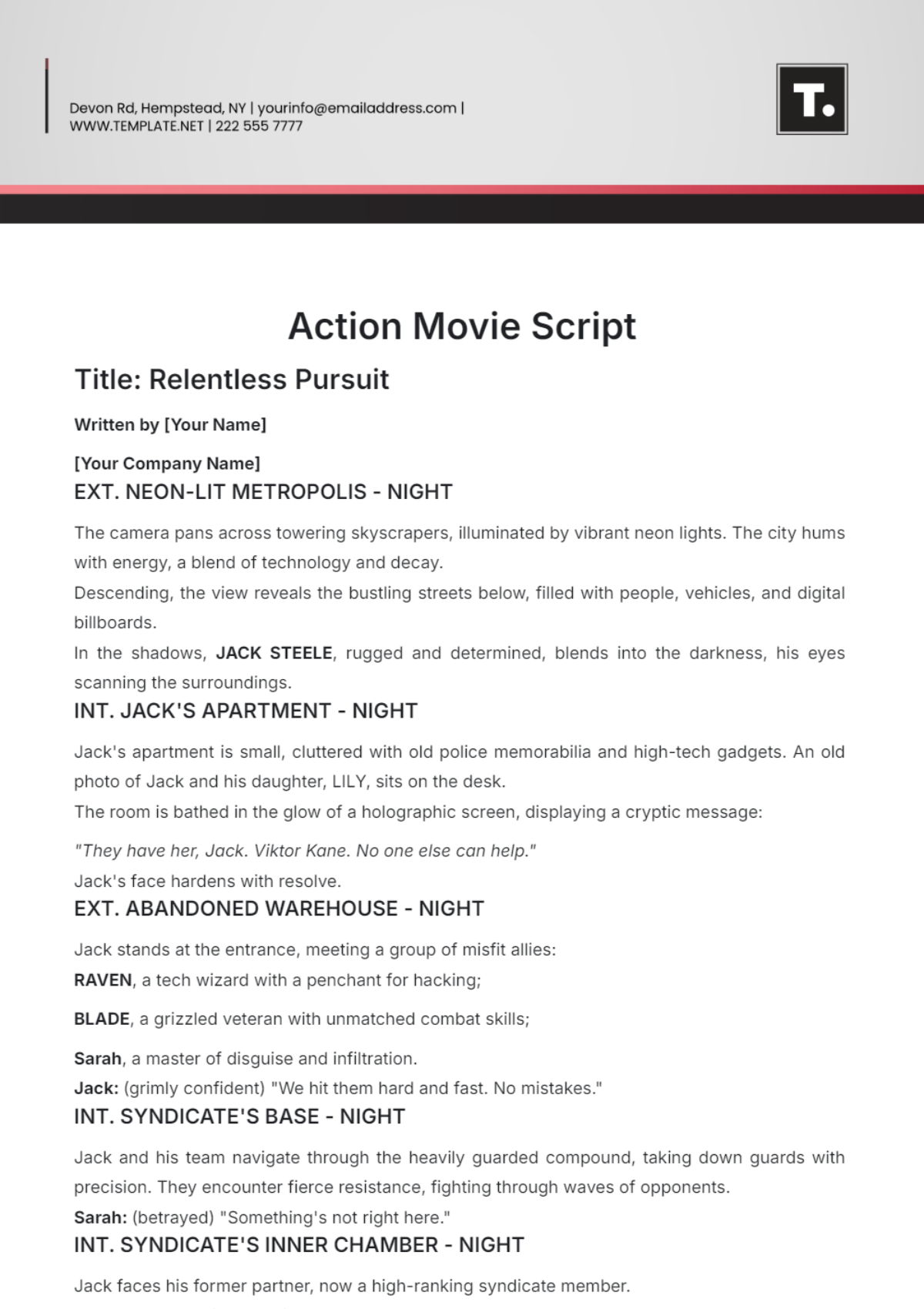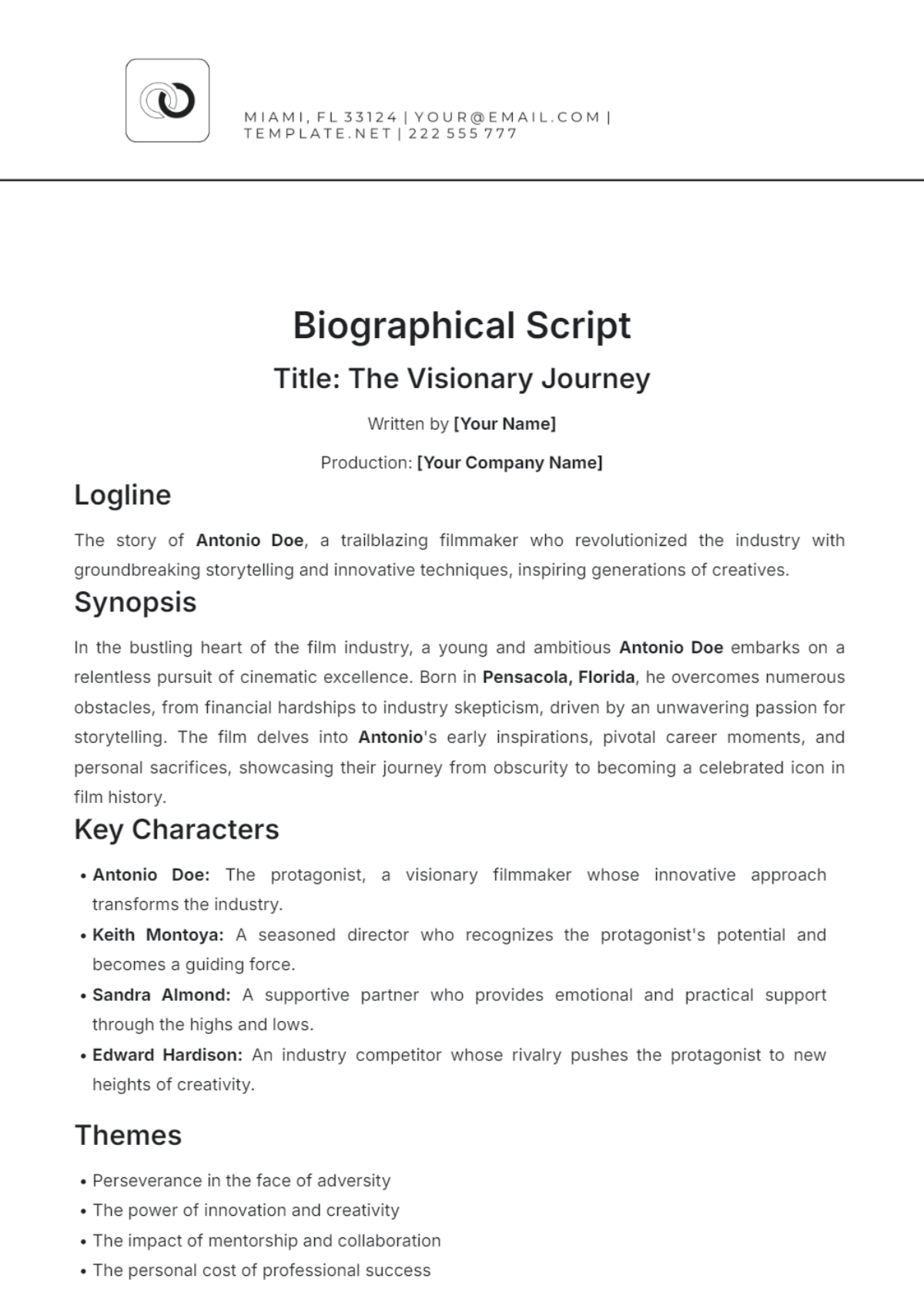Script Dialogue Writing
Welcome to the Script Dialogue Template designed by [YOUR NAME] under the organization [YOUR COMPANY NAME]. This script template is carefully crafted to assist professionals in the field of [YOUR FIELD] to achieve their objectives, specifically focusing on [OBJECTIVES]. Here you will find structured guidance to create engaging and impactful dialogue that aligns with your professional needs.
The following sections will provide a comprehensive framework divided into introductory remarks, body development, conflict resolution, and conclusion. Each section includes cues and placeholders marked in bold. For customization, replace the placeholders with relevant data to make your script contextual and effective.
I. Introduction
Start your script by setting the scene and introducing the characters involved. Details such as the time, location, and context should be clear to the audience from the very beginning.
[CHARACTER 1] introduces themselves and their role in the context of the dialogue.
[CHARACTER 2] provides additional background and expresses their intents clearly, setting the stage for the forthcoming dialogue.
Example: "[CHARACTER 1] meets [CHARACTER 2] at [LOCATION], during [EVENT]. As they strike up a conversation, [CHARACTER 1] is curious about [OBJECT OF INTEREST], which [CHARACTER 2] happens to know a lot about."
II. Body Development
Progress the dialogue by expanding on the characters' interactions, focusing on developing a deeper understanding of the main objectives. Include rising action that challenges the characters or presents them with a problem to solve.
[CHARACTER 1] poses a question or introduces a conflict that drives the conversation forward.
[CHARACTER 2] reacts, providing insights or escalating the conflict based on their perspective.
Insert additional dialogue lines to further complication or deepen the discussion.
Example: "[CHARACTER 1] is intrigued by the apparent discrepancy in [CHARACTER 2]'s account of [TOPIC] and probes further into the matter, leading to a tense but informative exchange."
III. Conflict Resolution
This section focuses on resolving the conflict or answering the questions raised in the previous section. Ensure that the resolution is satisfying and aligns with the established objectives of the dialogue.
[CHARACTER 1] and [CHARACTER 2] come to a mutual understanding or find a solution to their problem.
Include a turning point where the climax is resolved, and the characters reflect on their journey.
Example: "After a robust discussion, [CHARACTER 1] and [CHARACTER 2] finally agree on [RESOLVED TOPIC], each gaining a new perspective on [SUBJECT]."
IV. Conclusion
Conclude the script by summarizing the lessons learned or the conclusions drawn. Provide a clear ending or a segue into potential future dialogues.
Summarize the key outcomes of the dialogue.
End with a closing remark that reinforces the relationship between the characters or hints at future interactions.
Example: "[CHARACTER 1] thanks [CHARACTER 2] for the enlightening conversation and suggests a follow-up meeting to explore [FUTURE TOPIC]."
Made by [YOUR NAME]
Organization: [YOUR COMPANY NAME]
Address: [YOUR COMPANY ADDRESS]
Email: [YOUR COMPANY EMAIL]
Phone: [YOUR COMPANY NUMBER]
Website: [YOUR COMPANY WEBSITE]

